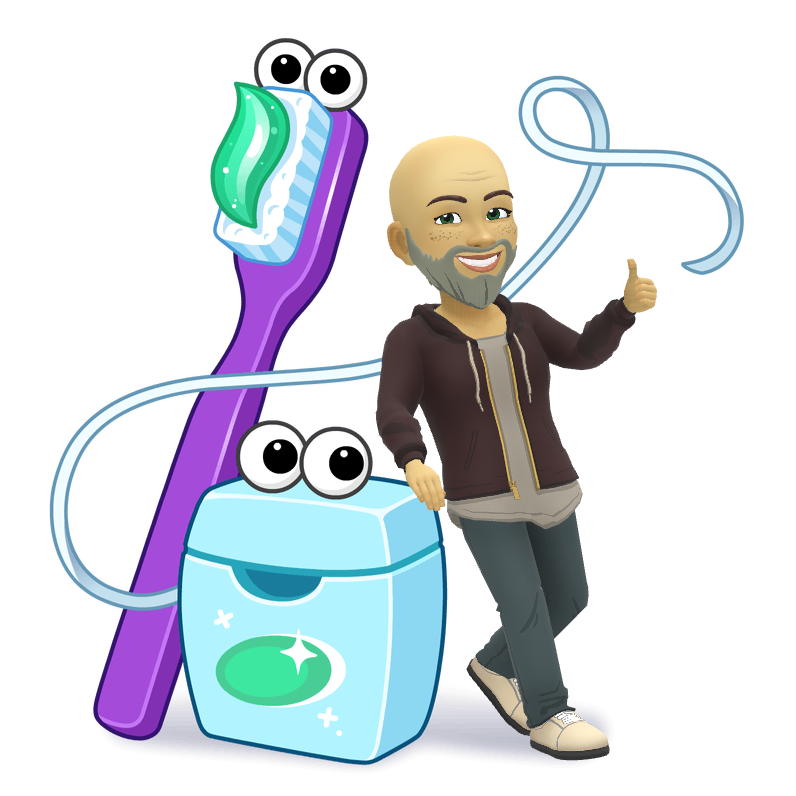Blog

Look, I've seen a lot of changes in the digital world since 2007. I was there for websites, social media, and everything in between. But I’m telling you straight: this AI shift is the biggest opportunity of our lifetime. You're seeing it, you're hearing about it, and you might even be scared by it. But while everyone else is debating or procrastinating, you need to be running. This is why you need to stop messing about and jump on the AI train now. 1. The War Is Already Here (White Collar Too!) People are losing their jobs right now, and this time, the AI is coming for the office work—the admin, the drafting, the repetition. Nobody cried when robots took over the most mundane tasks, but suddenly, when AI touches the manager's job, it's a problem. Here’s the punchline: Nobody owes you anything. This is business; it's war. You need to adjust, figure it out, and use this technology to protect your business. Don't waste time on excuses or silly ideologies. 2. You Are Sitting on a Gold Mine If you’re a small business owner, entrepreneur, or work in marketing or customer service, you are uncomfortably fortunate. You are in the sector that will taste the impact of AI first, hardest, and fastest. This gives you an incredible advantage. Why? Because you are already interacting with the tools and seeing what works in real life, not just in PowerPoint decks. You have the chance to be the loudest, most practical voice in your organisation, but only if you become a practitioner of these tools. 3. The Two Rules to Win: Tech Mastery and Deep Humanity To win the next 25 years, you have to go hard in two completely opposite places: Rule 1: Tech Mastery (The Hands). Don't be the architect who delegates; be the practitioner . I still write the copy for my own posts because you have to understand the tools deeply. Your knowledge of how to use the software is your biggest asset. Get your hands dirty now. Rule 2: Deep Humanity (The Heart). As the AI handles the mundane tasks that used to eat up your time, the human part becomes incredibly valuable. We need to scale the unscalable: genuine kindness, surprise and delight, emotional connection, and showing you truly care about your customer. This is the difference between a real connection and a cold, automated answer. 4. Speed is Your Only Moat While big corporations are still holding meetings about meetings, you, the small business owner, are already running. In business, speed beats scale every time. The window to gain an advantage is right now. The Ultimate Business Truth: Everything in business is bullsh*t except for two things: Your Team (most important) and Your Customer (everything else). Use AI to free up the time you spend on the busywork so you can focus 100% on serving your customers with humanity. The Brand Battle: As technology commoditises service and data, Brand is the ultimate moat . Build your personal brand and reputation now, because in a world where AI can automate everything else, the battle will be fought over who has the deepest, most trusted emotional connection with the customer. This Is Your Moment. This technology sits on the Mount Rushmore of human innovations. It is electricity; it is like when the plane was invented. You are in the right spot, but you have to squeeze this opportunity hard enough . Don't look back in five years with regret. Ready to build a strategy that combines Tech Mastery and Deep Humanity?
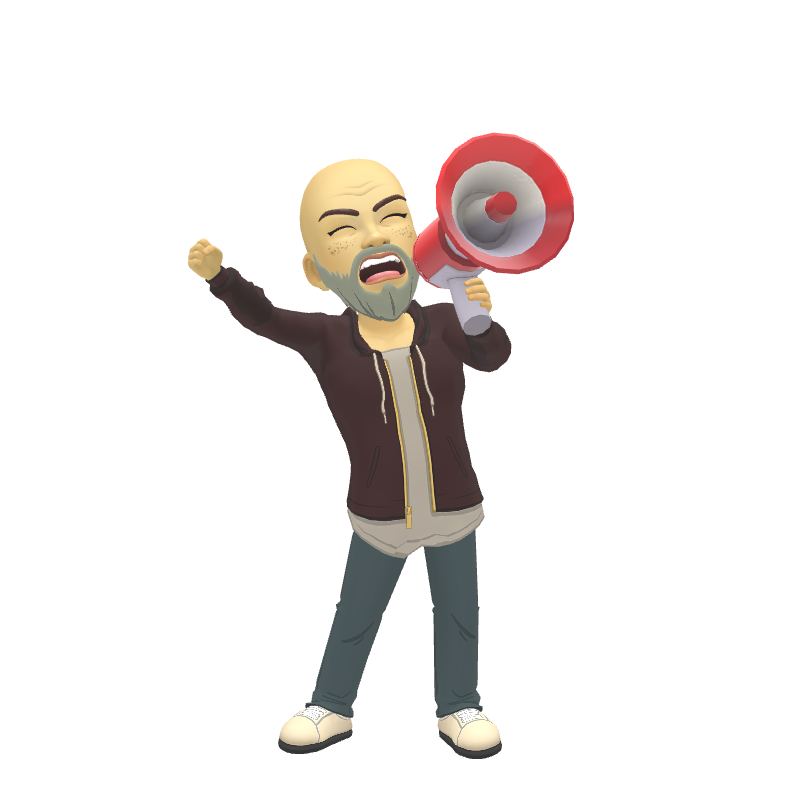
I’m telling you straight: What’s happening with AI right now is the biggest opportunity we've seen since the internet first hit retail. I was there for the websites in '97, I was there for social media in '07, and I’m telling you, this is the one you absolutely cannot miss. Most people are still debating the concept, while the smart money is already running. This is the truth you need to understand: 1. You Are Uncomfortably Fortunate. If you are a small business owner, an entrepreneur, or anyone working in marketing or customer service, you are in the perfect spot . Your industry is the one that will be impacted first, hardest, and fastest by AI integration. Why? Because the tools are designed to streamline the very tasks you do every day. This means you have an unbelievable advantage if you choose to act now. You have the chance to be the loudest voice in your industry, simply because you’re a practitioner and you’re experiencing these tools in real life. 2. The Two Rules to Win: Hands and Heart You have to go hard in two completely opposite places—and this is the punchline: Rule 1: Go All-In on the Tool (The Hands). Do not be the manager who delegates AI; be the practitioner . You need to get your hands dirty with every single tool available. Your knowledge of how to actually use the software is your greatest asset. As technology makes things like writing copy a commodity, those who deeply understand the mechanics of the tools will be the ones who win the game. Humility is the pathway to success here—get stuck in and master the tech. Rule 2: Double Down on Humanity (The Heart). As the 'robot' part of your business grows, the 'human' part becomes uncomfortably valuable. The more we lean into AI for the mundane tasks, the more we need to scale the unscalable parts of business: genuine kindness, surprise and delight, emotional connection, and showing you truly care about your customer. This is the Flintstone mentality —it’s the human touch that AI simply cannot replicate, and that is where your market leverage lies. 3. Speed is Your Biggest Advantage. While big corporations are still holding long meetings about their 2026 AI strategy, you, the small business owner, are already running. In business, speed beats scale every time. The window to gain an advantage is right now, and it will not last. You must make the time, cut out the pointless admin, and prioritize mastering these tools. 4. Brand is the Ultimate Moat. As technology commoditises data and service delivery, the only thing that separates you from the competition is brand and reputation . When buying decisions become passive (e.g., an AI agent reorders deodorant for you), the battleground is set on who has built the deepest, most trusted, emotional connection. Build your personal brand now—it's your greatest protection for the future. This Is Your Moment. Do Not Live with Regret. You are sitting in the perfect moment in history. You have the opportunity to transform your business with unparalleled efficiency. Don't live with the regret of letting this moment pass you by. Ready to stop messing about and build the two-sided strategy—Tech Mastery and Deep Humanity—that will make your business unstoppable?
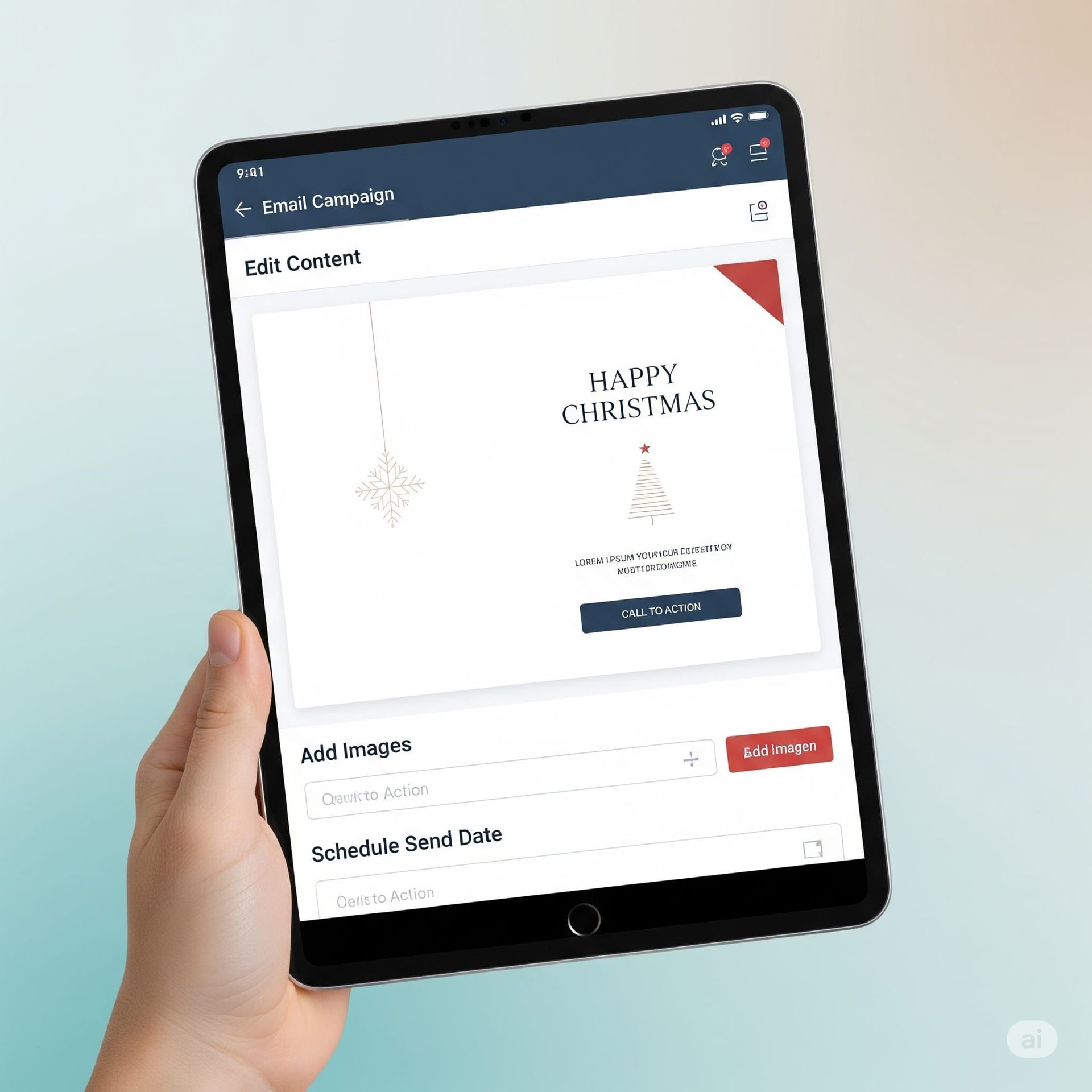
Web apps aren't a brand new idea, but they've come a very long way! They have a great history of making business and technology more accessible for everyone, not just tech experts. The History: In the early days of the internet, websites were just static pages with information. Then, clever developers figured out how to make them interactive, so you could fill out forms or click a button to do something. These were the first web apps. They were all about giving people a better, more interactive online experience without having to download software. The Present: Today, with huge advances in technology, web apps are incredibly powerful. They can look and feel just like a traditional app you'd find in an app store, with fast loading times and smooth performance on any device. The key difference is that they are built with clever, flexible web technology, keeping them low-cost and easy to update. The Future: The future of web apps is all about getting even smarter and more personal. They're starting to use AI to help with things like creating content, organising tasks, and making personalised recommendations. This means that a web app can become a super-smart assistant for your business and your clients, doing more than ever before to help you succeed. For your business, this means you can have a cutting-edge, low-cost app that grows with you, always staying up-to-date and providing a professional service without the limitations of traditional apps.
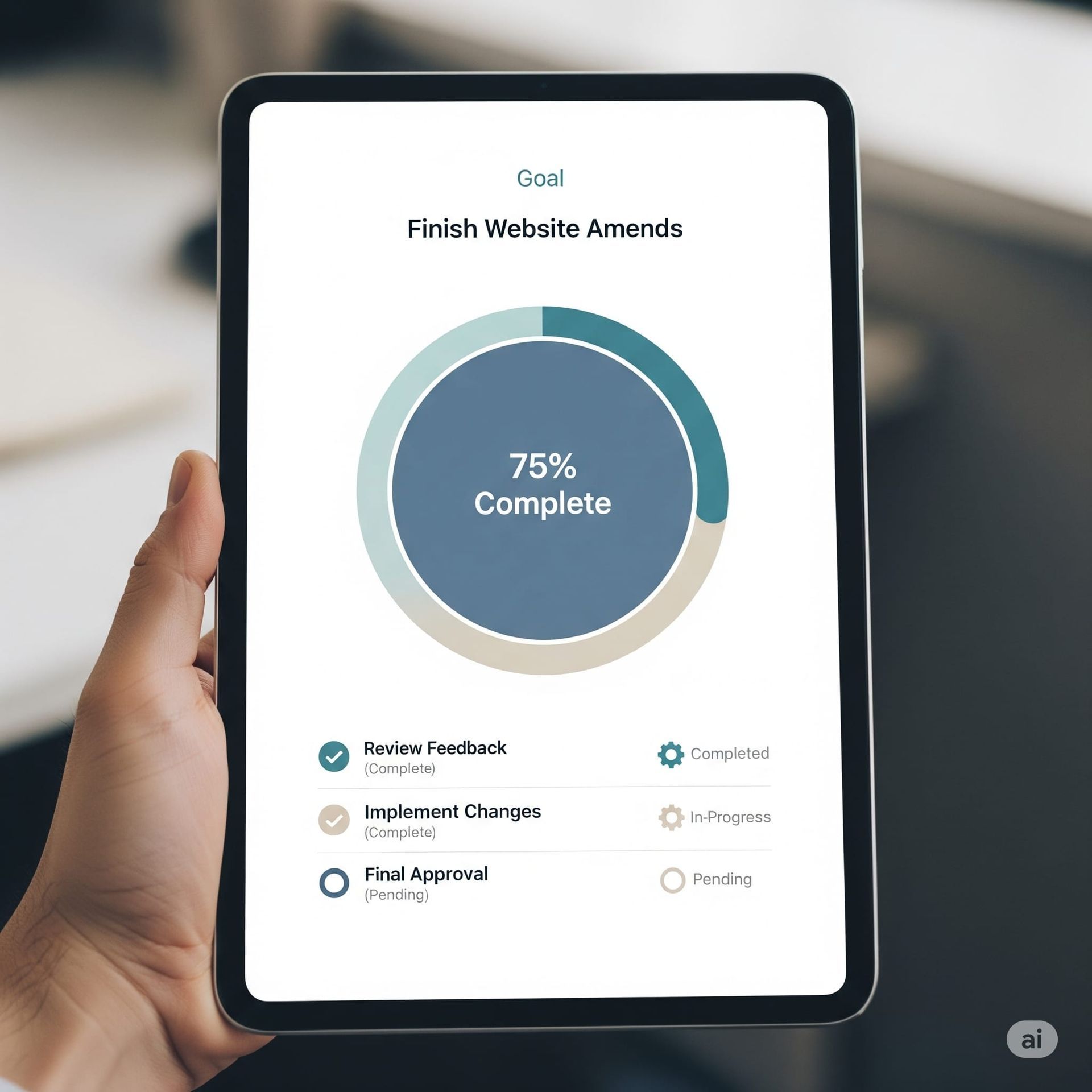
Many people use the words "website" and "app" to mean the same thing, but for a business, the difference is very important. Understanding this can help you decide what you need to grow. A website is mainly for showing information . Think of it like an online brochure or a digital shop window. You go there to read about a business, see their products, and find their contact details. While it might have a contact form or a blog, its main job is to present content for you to look at. A web app , on the other hand, is a tool for doing things . It’s software you access through a web browser. The user actively interacts with it to get a task done. For example, a web app could be a secure client portal where your customers log in, a project management tool for your team, or a personalised planner for your coaching clients. It’s an interactive tool that performs a specific function for the user. A good way to think about it: A website is like a book you read. A web app is like a computer programme you use. For your business, a website is essential for being found, but a custom web app is what makes your business run smoother and helps you provide a better, more personalised service to your clients.
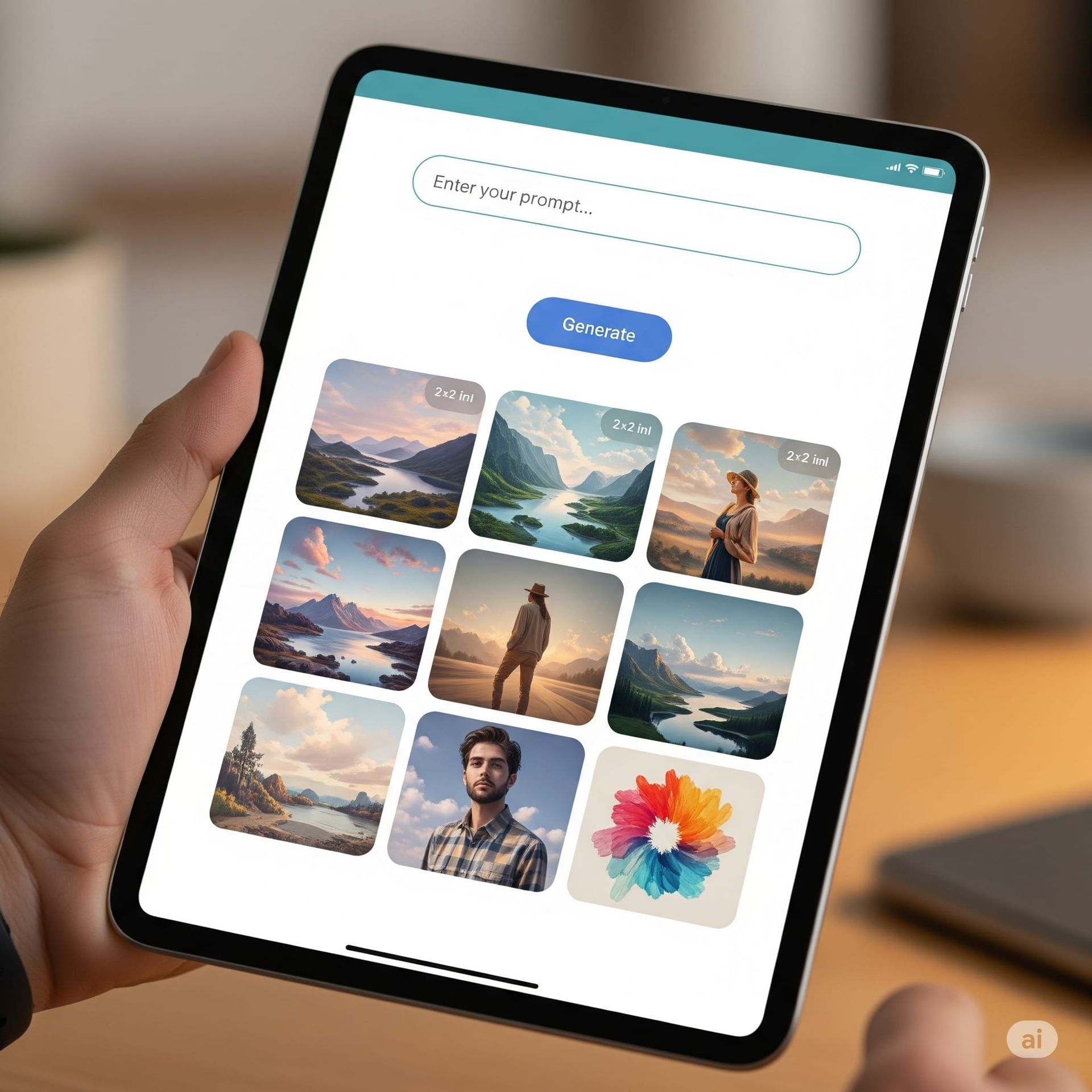
You’ve probably got dozens of apps on your phone or tablet, from your banking app to your favourite games. These are called traditional apps or native apps . They’re brilliant, but building one for a small business is often a massive, expensive project that takes a long time. Then, you have to convince people to go to an app store and download it, which is a big hurdle. This is where a web app is a game-changer. Think of a web app as a smart tool that lives on the internet, not on a person's phone. Your customers don't need to download anything; they just click a link, and it works perfectly in their web browser, whether they're on a computer, a tablet, or a phone. Why does this matter for your business? No App Store Hurdles: You avoid the huge costs, long waiting times, and strict rules of the app stores. Your web app can be built and launched much quicker. One App for Everyone: Instead of building a separate app for Apple and Android, a web app works for everyone on every device. It’s a single solution that reaches a much wider audience. Easy to Share: You can share your app with a simple link on social media or in an email, making it instantly accessible to your clients. For most small businesses, the aim is to solve a specific problem or streamline a process, and a web app is the fastest, most cost-effective way to do that. It gives you all the power of a professional tool without the app store fuss.

The world of online search is changing, and you might have heard a lot of buzz about AI (Artificial Intelligence) and how it’s shaking things up. If terms like ‘SEO’ and ‘LLM’ sound like a foreign language, don’t worry! We’re here to break down what this all means for your business and how you can use these changes to your advantage. The days of simply stuffing your website with keywords are long gone. The new frontier is about ‘mutual information’ – a fancy way of saying how much information your brand supplies to the internet. The more a search engine knows about you, the more visible you will be. Here's how you can make sure your business stays ahead of the curve: 1. Pinpoint Your Niche and Position Your Brand With AI becoming the default for search, traffic is becoming more splintered. This is actually great news for smaller, more specialised businesses! Rather than trying to be everything to everyone, focus on what makes you unique. What specific problems do you solve? You can even use AI to see how it perceives your business. Try searching for your brand on a tool like SemRush's AI branding review, or simply ask a public Chat AI what they know about your business. This will give you a good starting point for identifying your strengths and how you are perceived online. 2. Provide Key Information to the Networks Think of your website and all your online content as a package of information about your business. This is where E-E-A-T comes in – Experience, Expertise, Authoritativeness, and Trustworthiness . AI models are looking for specific information that matches a user's search query. Including and excluding certain details will make a huge difference to your visibility. Think about all the places your business is mentioned online. This includes your Google and LinkedIn reviews, mentions in PR articles, podcasts, blogs, and local directories. All of this data helps build a picture of your brand's authority. Even your social media profiles are now indexed and contribute to this. If you serve a national audience, make sure this is consistent across all your listings. 3. Be Known, Be Mentioned, Be the Source In this new AI-driven landscape, it’s harder to cheat the system. The focus is on your brand’s reputation. AI search engines are looking for evidence that people are talking about you and that you are a credible source of information. The key is to: Be Mentioned: Get other websites to talk about you. Be the Source: Become a trusted provider of information in your field. Be Known: Have a clear and consistent brand identity. Be Talked About: Encourage people to share their experiences with your business. Be Famous: Build a reputation relative to your brand’s size and niche. 4. The Hidden Factors You Can Influence To quickly increase your visibility, here are a few things you can do: Be Consistent: Ensure your business information is the same everywhere. This includes your Name, Address, and Phone Number (NAP). Swap Mentions: Work with other businesses to get reciprocal links or mentions on each other's websites. Focus on Brand Positioning: The focus is no longer just on keywords, but on clearly defining what you do, who you do it for, and why you do it. Leverage Employee Personas: Your employees can be your biggest advocates. Encourage them to build their own professional brands through writing, podcasts, and social media. This builds authority and brings in leads for your business. 5. Writing Content for AI Discovery When creating content, write naturally and clearly. AI is intelligent and understands the nuances of language. Treat your web pages as 'information packages' . Provide all the vital information a customer might need, such as directions, parking details, or opening hours. Use 'attributes' . AI understands specific information, such as the materials you use for your products or the specific services you offer. The value of being at the top of a traditional search ranking page is decreasing as more people use AI and LLMs to find what they need. However, by focusing on being a trusted, well-known, and informative brand, you can ensure your business remains visible and relevant in this exciting new era.

If you're a startup, you're juggling a million things, often with limited time and budget. You've probably heard about 'AI' and perhaps felt a bit overwhelmed by it all. Well, consider this your straightforward guide! We're not here to talk about sci-fi; we're here to show you how simple, everyday AI tools can genuinely streamline your marketing and business operations. Think of AI as your new, incredibly efficient assistant. While there are countless tools out there, we've picked 6 fantastic ones that can give any new business clear focus, make your life easier, and your workflow much smoother. Let's dive into how these tools can help you work smarter, not harder. Top 6 Tips for Using AI in Your Business AI might sound a bit daunting, but it's really just smart tools designed to make your life easier. Think of it as having a super-efficient assistant for your business. Here are our top tips, showing you how to get started with some fantastic tools: Tip 1: Use AI to Kickstart Your Ideas & Content. The Idea: AI is brilliant for beating writer's block or getting a fresh perspective. Don't know what to post on social media? Need a quick email draft? AI can give you a strong starting point in seconds. How it Helps (Tool: Gemini): Gemini is like your clever brainstorming partner. Just ask it a question or give it a topic, and it can whip up social media captions, blog ideas, or even short email drafts for you to adapt. It's super easy to use and a great way to get moving. Tip 2: Understand Exactly What Your Customers Are Asking. The Idea: Knowing what questions your potential customers are typing into Google gives you a massive advantage. It helps you create content that they're actively searching for, making your marketing much more effective. How it Helps (Tool: Answer The Public): Answer The Public is brilliant for this. Type in a keyword related to your business, and it shows you all the common questions people are asking around that topic. This gives you clear ideas for blog posts, FAQs, or social media content that truly resonates. Tip 3: Make Your Visuals Pop (Even Without a Designer!). The Idea: Great visuals grab attention, but not everyone's a graphic designer. AI can help you create stunning images and designs quickly, making your brand look professional without a huge budget. How it Helps (Tool: Canva): Canva uses AI features to help you design. You can use its "Magic Design" to create presentations or social graphics from a simple text prompt, or use its background remover for product photos. It helps you look like a pro, even if you're just starting out. Tip 4: Automate Your Social Media Posting. The Idea: Consistently posting on social media is key, but it takes time. AI-powered scheduling tools let you plan your content in advance, so your posts go out at the best times, even when you're busy with other things. How it Helps (Tool: Buffer): Buffer is a fantastic tool for this. You can schedule all your social media posts across different platforms in one go. Its AI features can even suggest the best times to post for your audience, ensuring your content gets seen without you needing to be online 24/7. Tip 5: Turn Information into Engaging Stories. The Idea: You've got great ideas and data, but how do you present them in a way that truly captures attention, whether it's for a pitch or an internal update? AI can help you create dynamic presentations and documents. How it Helps (Tool: Gamma / Venngage): Gamma and Venngage use AI to help you build presentations and infographics. You can give them your text or a topic, and they'll suggest layouts, designs, and even generate slides for you. This saves you loads of time making your information look professional and engaging, perfect for pitches or reports. Tip 6: Don't Just Use AI, Guide It! The Idea: AI tools are powerful, but they're not mind-readers. The better your instructions (we call these "prompts"), the better the results you'll get. Think of it as giving clear directions to your smart assistant. How it Helps (All Tools): This tip applies to all AI tools. When using Gemini , be specific about your desired tone and length. When using Canva or Gamma/Venngage , be clear about your design needs. The more detail you provide, the more tailored and effective the AI's output will be for your business. So, there you have it – six practical tips and six powerful AI tools that can genuinely transform how you run your startup. Remember, AI isn't about complexity; it's about making your life easier, freeing up your time, and giving your marketing efforts a real boost. You don't need to be a tech wizard to harness these benefits. If you're keen to explore how these tools, or others, can be specifically tailored to your business, we'd love to chat. Simply contact us for a free, no-obligation consultation. Let's get your business working smarter with AI!
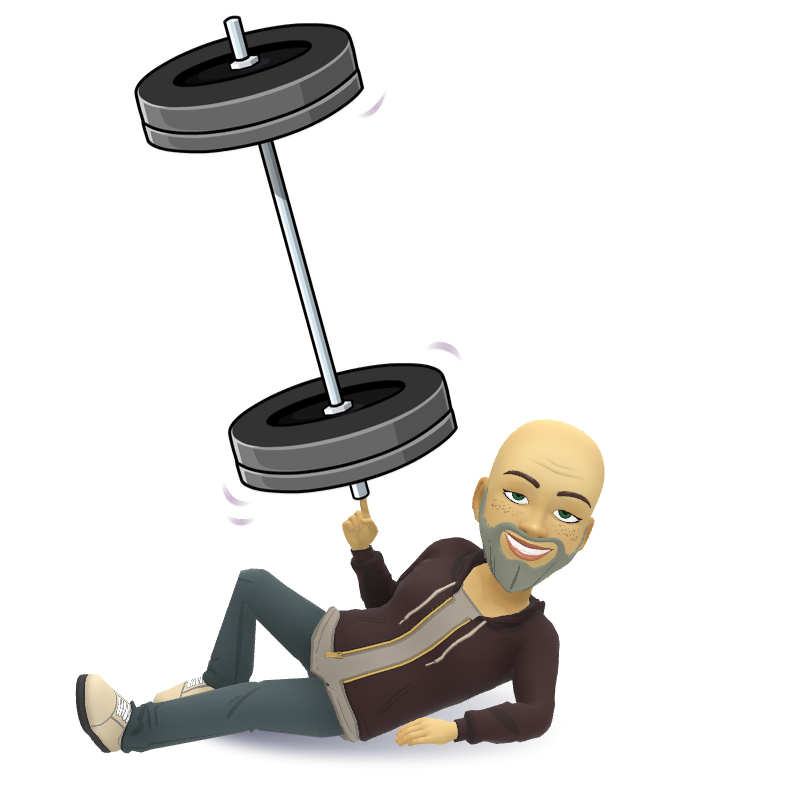
Have you ever walked into a sprawling, state-of-the-art gym for the very first time? You look around, and there it is: a dazzling array of equipment. Rows of treadmills, gleaming weight machines, complex resistance bands, and obscure apparatus you can't even name. You know these tools are designed to make you stronger, healthier, and more energetic. But without a clue where to start, which machine does what, or how to use them safely and effectively, it's not empowering – it's overwhelming . You might try a few things, feel awkward, and then just head home, perhaps never to return. This is exactly how many small business owners feel about Artificial Intelligence (AI) tools today. Just like that gym, the digital world is now packed with incredible AI apparatus. There are AI writing assistants (like the fancy new elliptical for your content), AI scheduling tools (your automated treadmill for social media), AI analytics dashboards (the smart scales that tell you what's really working), and countless others. Each one promises to make your business leaner, faster, and more effective. But without a plan, without guidance, and without someone to show you the ropes, these powerful AI tools can feel like a labyrinth of confusion. You know the potential is there to save time, boost your marketing, and streamline your operations, but how do you even begin? What's the right "workout" for your business goals? Which "machines" should you focus on first? That's where we come in!!! At Social Media Academy, we are your AI Trainers and Marketing Coaches. We don't just point you to the equipment and say "good luck." We understand the unique challenges of small business owners – limited time, stretched resources, and the need for clear, actionable steps. Just like a personal trainer builds a custom workout plan, and perhaps a comprehensive wellness and nutrition strategy, we will: Assess Your Business Needs: Help you identify the specific "muscles" (areas of your business) that need strengthening. Create Your Custom AI "Workout Plan": Guide you through the most relevant and user-friendly AI tools, showing you exactly how to use them for your social media and broader business operations. Provide Hands-On Coaching: Walk you through practical exercises, ensuring you build confidence and get real results. Develop Your AI "Wellness & Strategy Guide": Equip you with a clear roadmap to integrate AI into your daily workflow, helping you build a more efficient, productive, and ultimately, less stressful business life. You wouldn't expect to build your dream physique by randomly hopping on gym equipment. Don't expect to transform your business with AI without a guiding hand. Let us be your AI Personal Trainers. Together, we'll build an AI strategy that gets your business in peak condition, saving you time, boosting your marketing, and helping you reclaim your valuable energy.
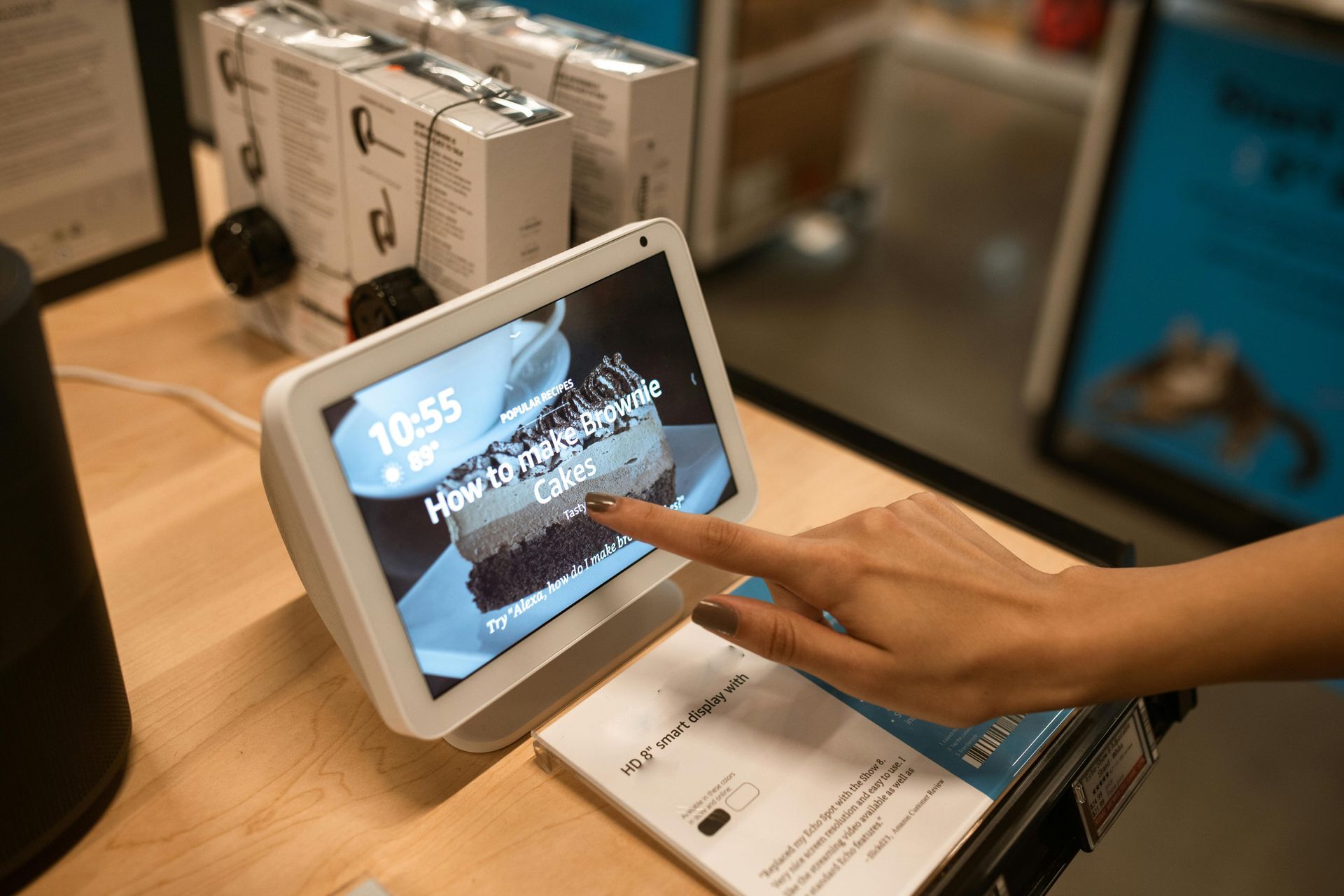
Unleash Your Business's Smart Assistants: The Next Level of AI in Marketing As a small business owner, I know you wear countless hats. Juggling social media, email campaigns, website updates, and everything else can feel like a constant battle against time. You've heard about Artificial Intelligence helping with marketing, but what if it could do more than just write a quick post? What if it could actually think and manage entire sequences of tasks for you? This is where the idea of AI Smart Assistants comes in – it's the next big leap in making your business run smoother and more efficiently than ever before. Beyond Basic Automation: What Are AI Smart Assistants? You're probably familiar with automation that does one thing: "If this happens, then do that." But imagine having a digital team member who can understand a bigger goal and then figure out all the connected steps needed to achieve it, without you having to guide them through each tiny action. That's the power of these AI Smart Assistants. They're like new members of your team who can think, make decisions, and perform a series of linked tasks all on their own, across different parts of your online world. How These Smart Assistants Can Revolutionise Your Business Think about how much time you spend on repetitive, multi-step tasks. Here are just a few ways these clever AI assistants can transform your daily operations: Effortless Client Management: Imagine a new enquiry comes in through your social media. An AI Smart Assistant can automatically take that lead's details, create a new record in your client system, send them a personalised welcome email that sounds just like you, and even set a reminder for you to follow up later if needed. All done without you lifting a finger after the initial setup! Content That Works Harder: You create one great piece of content – say, a blog post. An AI Smart Assistant could then automatically adapt that content into several versions suitable for different social media channels, schedule them, and even suggest relevant images, ensuring your message reaches more people without extra effort. Streamlined Customer Service: For common questions, these assistants can not only provide instant, helpful answers but also take actions. For example, if a customer asks about booking, the assistant could check availability and even guide them through part of the booking process. Massive Time Savings: By handling these multi-step processes, AI Smart Assistants free you up from tedious admin work. This means fewer errors, less stress, and more time for you to focus on what you do best – running and growing your business. Level the Playing Field: For small businesses, this technology means you can operate with the efficiency and automation levels usually only seen in much larger companies, giving you a serious competitive advantage. Bringing Smart Assistants into Your Business The exciting part is that this isn't just a futuristic concept. Clever digital tools exist right now that can help you set up these multi-step, AI-powered workflows. In my coaching, especially in the Master It All course, I focus on guiding you through exactly how to build these smart systems. I'll show you how to connect different parts of your business's online presence, demonstrate real-world examples, and work with you to set up automations that genuinely transform your day-to-day. It’s about building a marketing engine that truly works for you, freeing up your time and driving consistent results. Ready to explore how AI Smart Assistants can transform your business? Let's chat about your unique challenges and how building a more efficient marketing ecosystem can help you achieve your goals. Book a Free Consultation Call with Phil

Over the years, working with countless small business owners and startups, I've come to realise that being a truly effective social media coach is about far more than just knowing how to post. It's a blend of deep understanding, strategic thinking, and a genuine commitment to empowering my clients. I often reflect on the key attributes I strive to embody every day to ensure I'm providing the very best guidance. 1. Staying Ahead of the Curve: My Deep Understanding of Social Media Platforms and Trends I pride myself on being relentlessly curious and constantly updated. I'm always diving deep into the latest platform changes, algorithm shifts, and emerging trends to ensure that every strategy I recommend is not just relevant, but cutting-edge and truly effective for my clients. The digital world never stands still, and neither do I. 2. It's All About Your Business: My Strategic and Personalised Approach For me, there's no such thing as a one-size-fits-all solution in social media. I believe a great coach collaborates closely with each client, taking the time to truly understand their unique business, their audience, and their specific challenges. Together, we define clear objectives, develop bespoke strategic plans, select the right platforms, and craft content calendars that genuinely align with their brand goals. My focus is always on building authentic relationships and emotional connections, not just pushing promotions. 3. Unlocking Your Creativity: My Content Expertise I love helping clients discover their own creative voice and produce content that truly resonates. Whether it's guiding them to create actionable tips, engaging how-to guides, compelling videos, or informative infographics, I ensure their content addresses their audience's pain points and fosters trust. It’s about making them stand out in a crowded online world. 4. Clear Guidance, Real Empowerment: My Communication and Coaching Skills My approach is built on clear, jargon-free communication. I break down complex social media concepts into easy-to-understand, actionable steps, ensuring my clients feel empowered and confident, not overwhelmed. I believe in active listening, asking the right questions, and being fully present to build strong trust and rapport, which is essential for effective coaching. 5. Making Sense of the Numbers: My Analytical and Problem-Solving Abilities It's not enough to just post; we need to know what's working. I teach my clients how to interpret their social media analytics, identify what's performing well (and what isn't), and then adapt our strategies based on real data. It's about smart, data-driven improvements that lead to tangible results. 6. Building Real Connections: My Focus on Authentic Engagement Authenticity is at the heart of everything I teach. I guide clients on how to genuinely interact with their audience – responding thoughtfully to comments, messages, and mentions – to foster meaningful connections and cultivate a loyal community around their brand. It's about building relationships that last. 7. Proven Results: My Experience and Portfolio With years of hands-on experience managing social media accounts for diverse clients, I bring a wealth of practical knowledge to every session. My portfolio showcases real results, growth metrics, and successful campaigns, giving clients the confidence that they're learning from a proven track record. 8. Always Evolving: My Commitment to Networking and Continuous Learning The digital landscape never stands still, and neither do I. I'm committed to continuous learning, constantly adapting to new trends, and building relationships with other professionals in the industry. This ensures my clients always receive the most current and effective guidance possible. Ultimately, I see myself as more than just a coach; I'm a strategic mentor and a creative problem-solver. My goal is to provide personalised, value-driven guidance, foster authentic engagement, and continuously adapt to the evolving social media landscape to help my clients truly grow their presence and achieve meaningful results. It's incredibly rewarding to see them succeed.
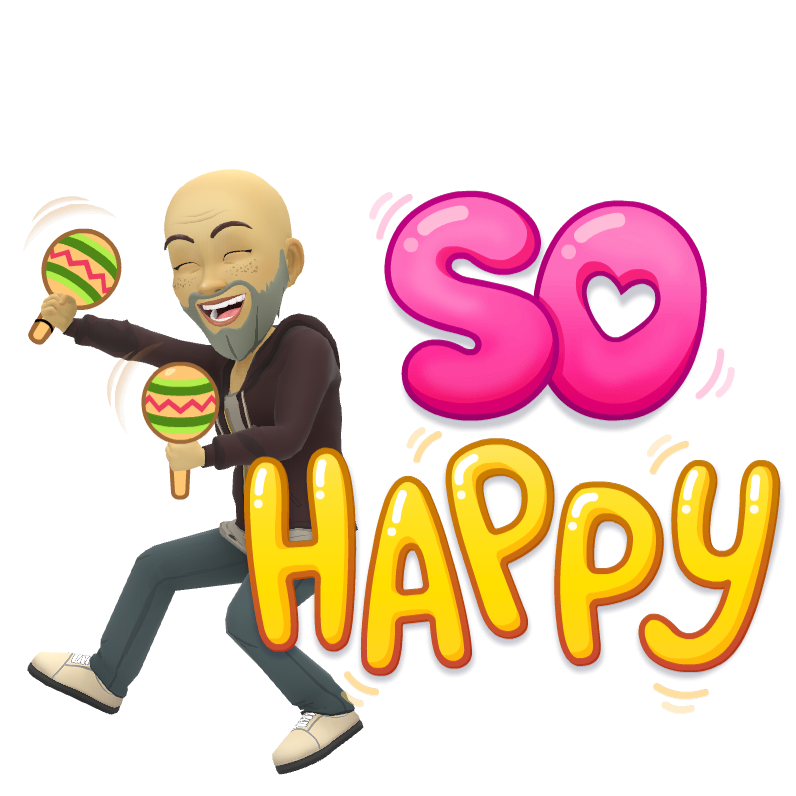
For years, I chased the dream: that one magical app that would do everything. You know the one – CRM, task manager, invoicing, project tracker, all rolled into a single, glorious digital beast. It felt like the answer to all my organisational woes, especially with my ADHD brain. The reality? It ended up having the opposite effect. I'd jump in to add a simple task, and before I could even type it, my eye would catch a notification about an overdue invoice or a deal to chase. My brain would immediately jump ship, and the original task? Gone, vanished into the digital ether. It took me a long time to realise that for a brain that thrives on clear pathways and minimal distractions, the "all-in-one" solution was actually the enemy. My biggest breakthrough came when I embraced the idea of single-function apps . If an app's primary job is to manage tasks, that's all it does. No tempting sidebars, no flashing alerts from other modules. This approach has been a game-changer for my focus and productivity. It's about finding tools that work with my ADHD, not against it, by removing the constant invitation to get sidetracked. This simple philosophy has transformed how I manage my day, my projects, and ultimately, my business. Google's Dynamic Trio: Keep, Tasks & Calendar – When it comes to keeping my day running smoothly, I rely heavily on Google's suite of apps. They're straightforward, widely accessible, and crucially, they stick to their lanes. This "one app, one job" approach is a godsend for my ADHD brain, preventing the digital clutter that leads to distraction. 1. Google Calendar: Your Time Anchor Google Calendar is my digital diary. It's where every appointment, meeting, and time-blocked session lives. Why does it work? It's super simple and visually clear . When I need to add an event, I open Calendar directly, click the time slot, type it in, and add a reminder. Done. No other features to tempt me away. I also use colour-coding for different types of events (work, personal, client calls) for a quick visual overview, and I set up recurring events so I don't have to constantly re-add regular meetings. 2. Google Tasks: Your No-Fuss To-Do List For all my actionable items, Google Tasks is my go-to. It's exactly what it says on the tin: a simple, straightforward list . There are no fancy features to get lost in, which means I can get in, add my task, and get out quickly. I typically open it as a sidebar in my Gmail or Calendar, type the task, and add a due date if needed. For bigger tasks, I break them down into subtasks to make them less daunting. It's quick, efficient, and keeps me focused. 3. Google Keep: Your Digital Scrapbook Google Keep is my versatile space for quick notes, ideas, lists, and saving content. It's incredibly flexible and visually oriented , making it ideal for quickly dumping information without needing to organise it perfectly right away. I use it for jotting down sudden thoughts, creating simple checklists, or – and this is a big one – copying and pasting long articles or content I want to read later. This stops me from getting sidetracked by it right now. I use simple labels (like "To Read" or "Ideas") to easily find notes later, but I don't overcomplicate the system. Gemini: My AI Sidekick and Seamless Integrator For my AI needs, Google Gemini is my chosen agent. While tools like ChatGPT are powerful, Gemini's deep integration with the Google ecosystem is what makes it a game-changer for me, especially with my ADHD. It significantly reduces the friction of moving information between different tools. Gemini isn't just a smart AI that generates text or brainstorms ideas; it's also a fantastic digital assistant that directly interacts with my Google apps. Here's how I use it to keep everything connected: Adding to Calendar: If I'm chatting with Gemini and decide I need to schedule something, I can simply prompt it, "Add 'Client follow-up call at 10 AM tomorrow' to my Google Calendar ." It understands and creates the event directly. Adding to Tasks: Need to remember a new to-do? I just tell Gemini, "Add 'Research new social media trends' to my Google Tasks ." Or even more specific, "Remind me at 3 PM to email Sarah via @Google Tasks ." Saving to Keep: If Gemini generates a brilliant idea or I want to save a summary of a conversation it's helped with, I can instruct it, "Save this response to a new note in Google Keep ." This seamless flow means I can capture information and organise it almost instantly, without losing my train of thought or getting sidetracked by opening multiple apps. It's like having a super-efficient personal assistant who anticipates my next move and keeps everything tidy. Trello: Visualising My Projects (Without the Overwhelm) While my Google apps handle my daily tasks and quick notes, for more structured projects and collaborative work, Trello has proven to be an invaluable tool. It’s a visual project management platform that uses "boards," "lists," and "cards" to organise tasks. What makes it particularly effective for a mind like mine? It's highly visual . My brain loves to see things laid out in a clear, accessible way. This visual structure prevents the information overload that can come with complex projects, allowing me to focus on specific stages without getting lost in the details. Here’s how I use it to keep my projects on track: Separate Boards for Projects: To avoid overwhelming myself, I create a separate Trello board for each major project or client . This keeps everything contained and reduces visual clutter. Simple Lists: Within each board, I stick to very simple, intuitive lists. Typically, these are "To Do," "Doing," and "Done," or specific project stages like "Drafting," "Review," and "Published." This allows me to see progress at a glance. Cards for Tasks: Each individual task within a project becomes a "card." I keep the descriptions on these cards concise and to the point, avoiding the trap of getting bogged down in too much detail at this stage. Colour-coding and Due Dates: I use colour-coding for priority or type of task, and crucially, I set due dates on cards. These visual cues serve as powerful reminders and help me prioritise without needing to dig deep into each task. Trello provides that perfect balance of visual clarity and structured organisation, allowing me to manage larger projects effectively without falling into the "overwhelm" trap. Fireflies.ai & Zoom's AI Companion: My Meeting Memory Boosters Meetings can be a real challenge for many ADHD brains. We want to be present, engaged, and contribute, but also remember every key decision and action point. This often leads to frantic scribbling, missing crucial details, or simply feeling overwhelmed. That's where Fireflies.ai has been an absolute game-changer. Fireflies.ai is an AI tool that joins my online or even in-person meetings. It automatically records, transcribes, and summarises everything that's said. This means I no longer have to worry about taking detailed notes; I can fully focus on the conversation , listen intently, and participate meaningfully. It's truly liberating. Here’s how these tools have transformed my meeting management: Automated Summaries: After every call, Fireflies.ai sends me a concise summary, highlighting key decisions, discussion points, and most importantly, tasks assigned to each participant . This ensures nothing slips through the cracks. Searchable Transcripts: If I need to recall a specific detail from a past meeting, I can easily search the full transcript rather than relying on my often-forgetful memory or trying to decipher hurried notes. Prepared for Next Steps: Before any follow-up meeting, I quickly review the Fireflies.ai summary. This instant refresh ensures I'm always prepared, remembering exactly what was discussed and agreed upon previously. I'm currently trialling Zoom's recently added AI Companion which offers similar functionalities. The goal is to see if I can consolidate my tools and cut down on subscriptions, but the core benefit of automated, intelligent meeting notes remains invaluable. These tools aren't just note-takers; they're memory boosters that significantly reduce post-meeting anxiety and improve my overall productivity. Notion: The "Grown-Up" Experiment (Using it Wisely) So, I'm trying to be a "grown-up" – which, for me, means exploring tools like Notion . It's an incredibly powerful and flexible workspace for notes, tasks, project management, and databases. It promises to do everything, and that's precisely why I'm approaching it with caution! As I've learned, the "all-in-one" solution can quickly become overwhelming for my ADHD brain. My goal with Notion is to integrate it wisely into my existing suite of single-function apps, without falling into the trap of using it for every single thing. It’s a delicate balance, and I'm still in the process of finding the best way to make it work for me, rather than becoming another source of distraction. Here's my current approach to this "grown-up" tool: Single Purpose Focus: Instead of trying to shift all my daily tasks and quick notes into Notion, I'm consciously reserving it for very specific, more formulated processes that genuinely benefit from its powerful database capabilities. Linked, Not Overlapping: The aim isn't to replace my tried-and-tested Google suite or Trello boards. Instead, Notion is meant to complement them. I'm exploring linking information where appropriate, using it for things that benefit from a structured database (like content planning pipelines or detailed client onboarding checklists), while my quick, daily tasks remain firmly in Google Tasks. Controlled Integration: I'm deliberately taking my time to understand its features and how they can enhance, rather than complicate, my existing workflow. It's a careful experiment in leveraging its power without getting lost in its vastness. Notion offers immense potential, but for a brain like mine, the key is discipline and a clear understanding of its role within my overall system. It's a journey towards more sophisticated organisation, but one taken with careful, measured steps.

As a digital marketer or business owner, you're constantly looking for the most effective ways to drive results. When it comes to generating leads or sales, a common question pops up: Should I create dedicated landing pages for my marketing campaigns, or just add new pages to my main website? It's a great question, and while adding pages to your site seems simpler, a dedicated landing page strategy often wins out. What's the Big Deal About Dedicated Landing Pages? Think of your main website as a well-stocked department store. It has everything: product aisles, customer service, an 'about us' section, and directions to the restrooms. It's designed to inform and navigate. A landing page , on the other hand, is like a highly focused pop-up shop. It has one specific product or offer, a clear call to action, and nothing else to distract you from making that purchase. Here's why that focused approach is so powerful for marketing campaigns: 1. Laser-Sharp Conversion Focus This is the number one reason. A good landing page is built with a single goal in mind – whether it's getting someone to sign up for a newsletter, download an ebook, or book a consultation. No Distractions: Unlike your main website, a landing page typically strips away navigation menus, footers, and other links. This means visitors can't get lost or click away from the offer. It's all about guiding them to take that one desired action. Clear Call to Action (CTA): The "Sign Up Now," "Download Here," or "Get Your Free Quote" button is prominent and unambiguous. 2. Highly Targeted Messaging Imagine running a Google Ad for "eco-friendly dog food." If that ad sends users to your generic pet supply homepage, they might have to hunt for what they're looking for. However, if that ad sends them to a dedicated landing page all about your new eco-friendly dog food line, featuring testimonials, benefits, and a clear "Buy Now" button, the experience is seamless and highly relevant. You can tailor content to specific ad campaigns, audience segments, and even individual keywords, creating a far more personal and effective experience. 3. Unbeatable Measurability & OptimiSation How do you know if your marketing efforts are actually working? With dedicated landing pages, it's crystal clear. Precise Analytics: You can easily track how many people visited the page and, more importantly, how many converted. This allows you to pinpoint what's working and what isn't. A/B Testing Power: Dedicated landing pages make it much easier to test different headlines, images, calls to action, and layouts. This iterative process of A/B testing is crucial for continuously improving your conversion rates and getting more bang for your buck. 4. Agility and Speed to Market In the fast-paced world of digital marketing, being able to launch campaigns quickly is a huge advantage. Rapid Deployment: Building a new page on your main website can sometimes involve developers, design cycles, and multiple approvals. Dedicated landing pages can often be spun up in minutes or hours, not days or weeks. Independent Updates: Changes to a landing page don't risk breaking anything on your main website, allowing for quick tweaks and iterations. When Should You Just Add Pages to Your Main Website? While landing pages are kings of conversion, your main website is still vital. You should build pages directly on your main site for: Evergreen Information: "About Us," "Services," "Contact Us," blog posts, and detailed product/service descriptions that aren't tied to a specific, short-term campaign. SEO Value: Pages intended to rank organically in search results for a variety of keywords and contribute to your overall domain authority. Complex Functionality: If you need deep e-commerce integration, user logins, or intricate database interactions. Long-Term Content: Content that will remain relevant for an extended period. The Takeaway: A Smart Strategy for Modern Marketing Creating dedicated landing pages is absolutely a smart move for your clients' marketing campaigns. It empowers you to: Maximise campaign performance by creating focused, high-converting experiences. Be agile and responsive to market opportunities. Optimise continuously based on clear data. It's not about choosing one or the other; it's about understanding the strengths of each approach and using them strategically. Landing pages fuel your campaigns, while your main website provides the comprehensive home base for your brand.

Running your own business is a whirlwind, isn't it? You're juggling everything from serving your customers to balancing the books. And then there's social media… that never-ending to-do list of posts, updates, and trying to figure out what on earth to say. If the thought of another week glued to your phone, trying to keep up with Facebook, Instagram, and all the rest makes you groan, you're definitely not on your own. Many small business owners in places like Southport (and all across the UK, to be honest!) feel exactly the same. It can feel like a massive time sink, and sometimes you wonder if it's even worth the effort. But what if there was a way to make social media less of a chore and more of a helpful tool – without needing a degree in rocket science or spending a fortune on fancy tech? Enter AI: Your New Social Media Mate Now, we know what you might be thinking. "AI? Isn't that all robots and complicated computer stuff?" Well, yes, some of it is. But the good news is that there are now some really clever (but surprisingly simple) AI tools out there that can take a big chunk of the social media burden off your shoulders. Think of AI in this context as your new, super-efficient assistant. It can help you with tasks that used to eat up your precious time, leaving you free to focus on what you do best – running your business and serving your lovely customers right here in Southport (or wherever you are!). How Can AI Actually Help My Social Media? You might be surprised at just how many ways AI can lend a hand: Coming Up with Ideas: Staring at a blank screen wondering what to post? Some AI tools can help you brainstorm ideas based on your business, what's popular, and what your audience might like. No more creative block! Writing Your Posts: Not a natural wordsmith? AI can help you draft social media posts, making sure they sound engaging and get your message across clearly. You can then tweak them to sound just like you. Finding the Best Times to Post: Ever wondered when most of your customers are actually online? AI can analyse your audience and suggest the best times to share your content, meaning more people will actually see it. Scheduling Your Posts: Instead of having to manually post every single day, AI-powered tools can schedule your content in advance. You can sit down once a week, plan your posts, and let the AI take care of the rest. Imagine those extra hours! Keeping an Eye on Things: Some AI can even help you monitor what people are saying about your business online, so you can quickly respond to comments or questions. No Tech Head Required! The best part is that you don't need to be a tech whizz to use these tools. Most of them are designed to be really user-friendly, with clear instructions and simple interfaces. It's often as easy as typing in a few details about your business and letting the AI do its magic. Reclaim Your Time and Focus on What Matters Social media doesn't have to be a constant drain on your time and energy. By embracing some of these clever AI tools, you can: Save hours every week: Think about what you could do with that extra time – maybe focus on a new product, chat with more customers, or even just have a proper tea break! Be more consistent: Regularly posting engaging content helps you stay top-of-mind with your customers. Potentially reach more people: By posting at the right times and with engaging content, you're more likely to get noticed. Reduce stress: Take the pressure off trying to come up with content on the fly. Ready to Dip Your Toe in the AI Water? If you're a small business owner in Southport (or anywhere else in the UK!) who's feeling overwhelmed by social media, now might be the perfect time to explore how AI can help. It's not about robots taking over your business; it's about using smart tools to make your life a little bit easier and your marketing more effective. At Social Media Academy, we're passionate about helping small businesses understand and use these tools without the jargon. Keep an eye out for our upcoming resources and training on how to harness the power of AI for your social media – you might just be surprised at how much time you can save!

It seems like every business is talking about their AI strategy these days. But let's be honest, a lot of it is just fancy talk. They buy a shiny new AI tool, cross their fingers, and hope it magically transforms their social media. The truth is, AI on its own won't fix your marketing. What will make a difference is having a solid system in place, with AI working as a powerful tool within that system. The Problem with "Vibes-Based" AI We're seeing it all the time: businesses investing in AI writing tools, or AI analytics platforms, without any real idea how to use them effectively. There's no proper training for staff, no integration into their existing workflow, and no clear goals. They end up wasting money on software they don't understand, and their social media results stay stubbornly the same. AI Needs a System to Shine Think of AI as a turbocharger for your car. It can give you a massive boost, but it's useless without an engine, wheels, and a driver who knows where they're going. In social media, your engine is your overall marketing plan. This includes things like: Knowing your target audience inside out Having clear goals for your social media activity Creating a consistent flow of valuable content Engaging with your followers regularly Our Social Media Training: AI Integrated That's why our social media training course is different. We don't just throw AI tools at you and wish you luck. We provide a comprehensive framework – a 3-month marketing plan – that puts AI in its proper place. You'll learn: How to build a robust social media strategy from the ground up Which AI tools are genuinely useful for specific tasks How to integrate those tools seamlessly into your daily workflow How to measure your results and refine your approach over time Get Real Results, Not Just Hype We're focused on getting you tangible results: more engagement, a bigger following, and ultimately, more customers. It's about using AI strategically, not just for the sake of it. #MemeingfulMarketing What next?: Want to see how AI can really transform your social media? Book a free consultation to see how AI can change the way you work forever

In today's fast-paced digital world, social media is a crucial tool for businesses of all sizes. But managing it effectively can be time-consuming and overwhelming. What if you could achieve better results with less effort? That's where AI comes in. AI (Artificial Intelligence) is revolutionising how we approach social media marketing, offering powerful tools to automate tasks, analyze data, and create engaging content. At Social Media Academy, we offer specialised AI training to help you harness the power of AI and transform your social media strategy. Whether you prefer in-person workshops or the flexibility of Zoom sessions, our training will equip you with the knowledge and skills to thrive. Our Proven AI Training Process We've developed a simple yet highly effective 3-step process to guide you through the world of AI-powered social media management: 1. Smart Social Check-Up The first step in our AI training is to understand where you are now. We'll conduct a thorough Smart Social Check-Up of your existing social media presence. This involves using cutting-edge AI tools to analyse your accounts, identify what's working well, and pinpoint areas for improvement. We'll uncover hidden gems in your data – successful posts you can replicate, optimal posting times you might be missing – and also highlight missed opportunities, such as untapped audiences or underperforming content. This data-driven approach ensures that our AI training is tailored to your specific needs and goals. 2. Putting AI to Work Next, we'll dive into the practical application of AI tools. This is where the magic happens! Our AI training will show you how to put AI to work for your business in meaningful ways. You'll learn how to: Create better content: Discover AI tools that can help you generate engaging captions, suggest relevant hashtags, and even design stunning visuals, saving you time and boosting your content's impact. Chat with followers automatically: Implement AI-powered chatbots to provide instant responses to customer inquiries, answer frequently asked questions, and build stronger relationships with your audience – all without sounding robotic or impersonal. Build systems that learn: Leverage AI algorithms that analyze your social media data to identify patterns and trends, allowing you to refine your strategy over time and continuously improve your results. We'll focus on practical, actionable strategies that you can implement immediately, regardless of your technical expertise. Our AI training emphasizes ethical and responsible AI use, ensuring you maintain a genuine connection with your audience. 3. Watch Everything Improve The ultimate goal of our AI training is to help you achieve tangible results. By implementing the strategies and AI tools you learn, you'll watch everything improve. You can expect to: See your follower numbers climb: Attract a larger and more engaged audience with AI-optimised content and strategies. Watch engagement rates soar: Increase likes, comments, and shares by delivering content that resonates with your target audience. Spend less time managing social accounts: Automate repetitive tasks and streamline your workflow, freeing up valuable time to focus on other aspects of your business. Our AI training empowers you to work smarter, not harder, and achieve sustainable social media success. Training Options: In-Person or Zoom We understand that businesses have different needs and preferences. That's why we offer our comprehensive AI training in two convenient formats: In-Person Training: We come to you, at your business premises so that all your tools are close by and we can discuss how AI tools can help you to achieve your goals Zoom Training Sessions: Enjoy the flexibility of learning from the comfort of your own office, with live instruction, Q&A sessions, and engaging virtual activities. What to do next?: Ready to transform your social media strategy with the power of AI? Contact us today or book a free consultation to learn more about our AI training programs and how we can help your business thrive.
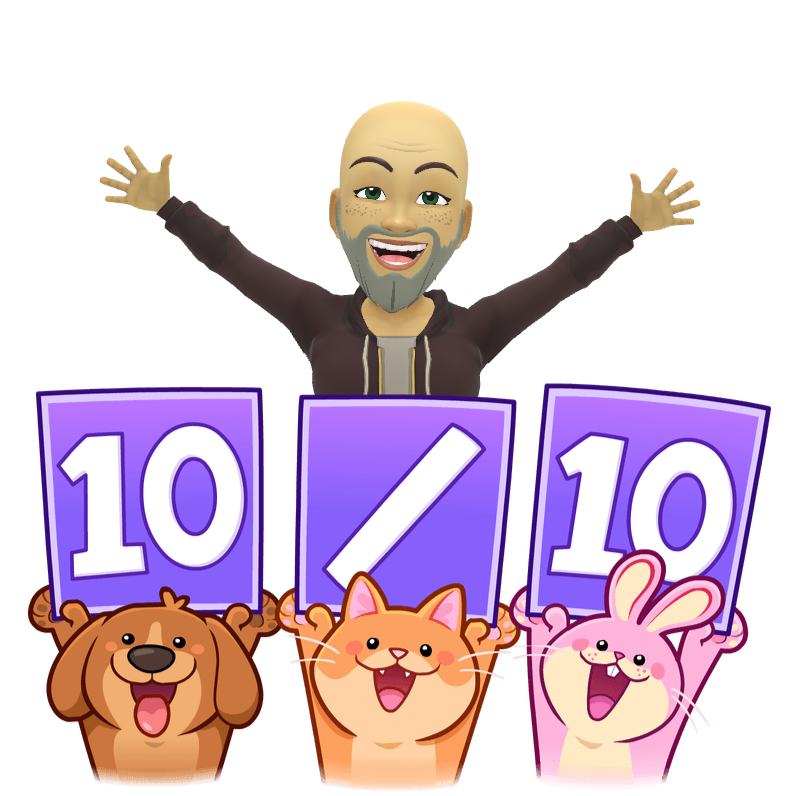
Hi everyone, I'm always looking for ways to help you streamline your business and free up your time. AI (Artificial Intelligence) might sound like something from a science fiction film, but it's actually becoming incredibly useful for small businesses like ours. There are now some amazing tools that can automate tasks, boost your marketing, and generally make life a lot easier. I've been doing some digging, and I want to share 10 of the most promising AI tools I've found. These are all designed to be helpful even if you're not a tech whizz, so don't worry if you're not particularly confident with computers! Tool 1: HeyGen Description: First up is HeyGen. In simple terms, HeyGen lets you create videos using AI avatars – those are like computer-generated people. Instead of having to film yourself or hire actors, you just type in what you want the avatar to say, and HeyGen turns it into a video. This is a really clever way to make training videos, marketing clips, or even just quick updates for your customers, without needing fancy equipment or any filming skills. Key Features: You can choose from a range of different AI avatars. It's really easy to turn text into a video – you just type, and the avatar speaks. Some versions let you create an avatar that looks like you (if that's something you're interested in!). It can speak in different languages, which is brilliant if you have customers overseas. Use Cases: Imagine creating a welcome video for new customers that feels really personal, without you having to be in front of the camera every time. If you need to explain a product or service, HeyGen can help you make a clear and engaging explainer video. It's also great for creating quick social media adverts. Pricing: It's worth having a go with the free trial to see if it's right for you. They have different monthly plans, depending on how many videos you need to make. The cost goes up as you need more videos or extra features. Personal Thoughts : I can see this being a big time-saver for creating those 'how-to' videos that so many of you need for your websites. I'm still getting my head around how realistic the avatars are! It's quite impressive, but it's important to use it in a way that still feels genuine to your brand. For small businesses on a budget, HeyGen could be a really cost-effective way to get professional-looking videos. Tool 2: ElevenLabs Description: Next up is ElevenLabs, which is all about creating realistic voices with AI. You can type in any text, and ElevenLabs will read it aloud in a very natural-sounding voice. What's even more amazing is that it can create an AI version of your own voice, or any other voice you want, which opens up some very interesting possibilities. Key Features: The voices sound incredibly lifelike – much better than the old computer voices we're used to. You can adjust things like the speed and tone of the voice. The voice cloning is the standout feature – it's a bit like making a digital copy of someone's voice. It works in lots of different languages. Use Cases: If you're creating audio versions of your website content for people who prefer to listen, ElevenLabs is ideal. For those of you creating online courses, this could save you hours of recording time. Imagine creating personalised audio messages for your customers using your own AI voice! Pricing: There's a free option to try it out, which is always good. The paid plans charge you based on how much speech you generate each month. Personal Thoughts: I'm really excited about the potential for this to make online learning more accessible. The voice cloning is where it gets really interesting, but we do need to think carefully about the ethics of using this technology responsibly. For small businesses, ElevenLabs could be a quick and affordable way to add professional audio to your marketing or training materials. Tool 3: Gemini Description: Now, I'm sure you've all heard of Gemini! It's Google's latest AI model, and it's designed to be incredibly versatile. Think of it as a super-smart assistant that can help with all sorts of tasks – from writing emails to brainstorming ideas. What sets Gemini apart is its ability to understand and work with different types of information, like text, code, images, and more. This makes it really powerful for a wide range of business needs. Key Features: Gemini can generate text, translate languages, write different kinds of creative content, and answer your questions in an informative way. It's designed to be very responsive and helpful, almost like having a conversation with a knowledgeable colleague. It's constantly being updated and improved, so it's only going to get better over time. Use Cases: Need help drafting a social media post? Gemini can do that for you. Stuck on what to write in an email to a difficult client? Gemini can help you find the right words. Want to brainstorm some new marketing ideas? Gemini can be your sounding board. It can even help you understand complex data or create reports. Pricing: Access to Gemini varies depending on how you want to use it. Some features are integrated into existing Google products, while others might be accessed through APIs or other platforms. It's best to check the latest Google AI announcements for the most up-to-date information on pricing and availability. Personal Thoughts: I'm really excited about the potential of Gemini to help small businesses with their marketing. It could be a game-changer for creating content and engaging with customers. What I love about it is how easy it is to use. You can just ask it a question in plain English, and it understands what you mean. For those of you who struggle with writing, Gemini could be a real lifesaver. Tool 4: AnswerThePublic Description: AnswerThePublic is a brilliant tool for understanding what your customers are really asking about. It basically shows you all the questions people are typing into search engines related to a particular topic. This is incredibly valuable for your marketing, as it helps you create content that actually answers your customers' needs and questions. Key Features: It generates visual 'search clouds' that show you questions, prepositions, comparisons, and related searches. It organises the data in a clear and easy-to-understand way. It helps you identify trends and patterns in what people are searching for. Use Cases: If you're writing blog posts for your website, AnswerThePublic can give you a wealth of ideas for topics to cover. It's great for planning your social media content – you can create posts that directly address your customers' questions. It can also help you optimise your website content to rank higher in search engines. Pricing: There's a free version that gives you a limited number of searches per day, which is a good way to try it out. The paid versions offer more searches and extra features. Personal Thoughts: I use this tool all the time! It's amazing for getting into the minds of your customers and understanding what they're struggling with. It's so much better than just guessing what people want to know – it gives you concrete data. For small businesses on a tight budget, the free version is a great starting point. Tool 5: Google Alerts Description: Google Alerts is a free tool from Google that sends you email notifications whenever new content about a specific topic appears online. It's a really simple but powerful way to stay updated on your industry, your competitors, or even mentions of your own business. Key Features: You can set up alerts for any keyword or phrase. You can choose how often you receive alerts (e.g., daily, weekly, or as it happens). You can specify the sources you want to monitor (e.g., news, blogs, web). Use Cases: Keep track of what people are saying about your brand online. Monitor your competitors' activities and marketing campaigns. Stay informed about the latest trends and news in your industry. Find new content to share with your social media followers. Pricing: Google Alerts is completely free to use. Personal Thoughts: I recommend setting up Google Alerts for your business name, your key products or services, and your main competitors. It's a really easy way to keep your finger on the pulse. It's amazing how much information is out there, and Google Alerts helps you filter out the noise and focus on what's important. For small businesses, this is a fantastic free tool that can provide valuable insights. Tool 6: ScribeHow Description: ScribeHow is a tool that automatically creates step-by-step guides and documentation. It records your screen as you perform a task and instantly turns it into a clear, visual guide with screenshots and instructions. Key Features: Automatic screenshot capture. Step-by-step instructions generated from your actions. Easy editing and customization of guides. Options to share or embed guides. Use Cases: Create training materials for new employees. Document your business processes and procedures. Provide customer support by showing people how to use your products or services. Generate how-to guides for your website or knowledge base. Pricing: ScribeHow typically offers a free trial or a free version with limited features. Paid plans usually offer more advanced features and unlimited guide creation. (You'll need to check their site for the specifics) Personal Thoughts: This tool is a game-changer for creating training documentation! It saves so much time compared to manually writing out instructions and taking screenshots. If you're always answering the same questions from customers or employees, ScribeHow can help you create clear guides that everyone can refer to. I think this would be particularly useful for businesses with remote teams, as it makes it easy to share knowledge and processes. Tool 7: Suno Description: Suno is an AI tool that allows you to create music with vocals. You can generate songs in various styles and genres just by providing text prompts. It simplifies the music creation process, making it accessible to those without musical expertise. Key Features: Text-to-music generation. Ability to create songs with lyrics. Support for various music styles and genres. User-friendly interface. Use Cases: Creating background music for videos or presentations. Generating unique jingles or theme songs for your brand. Producing personalised songs for social media content. Exploring musical ideas without needing instruments or recording equipment. Pricing: Suno may offer a free trial or a free tier with limitations. Paid subscriptions likely provide more song generation credits or advanced features. (It's best to check their website for the most current pricing details.) Personal Thoughts: This is a really fun and creative tool! It could be a great way to add a unique touch to your marketing materials. While it might not replace professional musicians for high-quality recordings, it's excellent for quick and easy music creation. For small businesses looking to create engaging content on a budget, Suno offers an interesting option to explore. Tool 8: NiceJob Description: NiceJob is a reputation management platform that helps businesses collect and showcase positive customer reviews. It automates the process of gathering reviews from various platforms and helps you use those reviews in your marketing to attract more customers. Key Features: Automated review collection from multiple sites. Tools to share reviews on social media and your website. Features to monitor your online reputation and track your progress. Use Cases: Building trust and credibility with potential customers. Improving your online reputation and search engine rankings. Saving time on manually collecting and sharing reviews. Pricing: Look for different plans based on the number of locations or the features you need. They often have trials or demos available. Personal Thoughts: For local businesses, online reviews are absolutely essential. NiceJob seems like a great way to make the most of those positive customer experiences. I like that it helps you not only collect reviews but also use them actively in your marketing.If you're struggling to get enough reviews or want to improve your online reputation, NiceJob is worth checking out. Tool 9: Synthesia Description: Synthesia is an AI video generation platform that allows you to create videos with AI avatars. Similar to HeyGen, it simplifies video creation by enabling you to generate videos from text, using digital avatars as presenters. Key Features: A variety of AI avatars to choose from. Text-to-video conversion in multiple languages. Custom avatar creation (possibly, confirm on the website). Easy video editing and sharing. Use Cases: Creating training videos and tutorials. Developing marketing and sales videos. Personalizing video messages for customers. Pricing: Look for free trials or subscription plans with varying video lengths or features. Personal Thoughts: AI video generation is becoming more and more impressive. Synthesia could be a cost-effective way to produce professional-looking videos without expensive equipment. It's important to consider when using AI avatars is appropriate for your brand. Sometimes a real person is still more effective. For businesses that need to create a lot of video content regularly, Synthesia could save significant time and money. Tool 10: BigVu Description: BigVu is a teleprompter and video creation app that helps you record professional-quality videos with your smartphone. It combines a teleprompter to help you read your script with features to edit, add captions, and share your videos. Key Features: Teleprompter functionality that scrolls your script. Automatic captions to make your videos more accessible. Video editing tools to trim, add music, and brand your videos. Easy sharing to social media platforms. Use Cases: Creating engaging videos for social media marketing. Recording presentations and training videos. Producing video updates for your team or clients. Pricing: They often have a free version with basic features and paid plans for more advanced functionality. Personal Thoughts: I've always struggled with looking natural on camera, so a teleprompter app like BigVu is very appealing! The automatic captions are a great feature for making videos more accessible to everyone. For small businesses that want to create professional-looking videos on a budget, BigVu is a handy tool. CONCLUSION So, there you have it – my top 10 AI tools to help you supercharge your business! We've covered a lot of ground, from automating tasks and creating engaging content to managing your reputation and streamlining communication. Remember, AI is a powerful tool, but it's not about replacing you. It's about empowering you to work smarter, not harder. By exploring these tools and finding the right fit for your needs, you can free up time, improve your efficiency, and ultimately achieve your business goals faster. I encourage you to take the next step and try out a few of these tools. Most offer free trials or free versions, so you can experiment without any risk. I'm really keen to hear what you think! Which of these tools are you most excited about? Have you used any other AI tools that have been a game-changer for your business? Please share your thoughts with me – let's learn from each other! *Disclaimer: Please note that some of the links on this page are affiliate links, which means we may earn a small commission at no additional cost to you if you make a purchase through them. **Double-check the details and pricing on each website, as this information can change.

Right, let's have a proper honest chat, shall we? Looking back at my romantic history, it's fair to say it reads a bit like a comedy of errors – albeit one that probably wasn't all that funny for the leading ladies involved. Two marriages, three other long-term girlfriends… a fair few notches on the relationship bedpost, you might say!! But if I'm truly honest with myself (and with you lot), the trail of bewildered and likely exasperated exes behind me might just have a common denominator: my good old friend, ADHD. It wasn't until later in life that the penny finally dropped, that the whirlwind of my brain had a name. But looking back through the lens of this newfound understanding, so many of my less-than-stellar relationship habits suddenly click into place. Take the forgetfulness, for instance. It wasn't a conscious decision to blank on birthdays or anniversaries; my brain simply didn't flag them as the red-letter days they are. The mental clutter, the lack of organisation that spills out into every aspect of life? That probably didn't scream "stable and reliable partner" either. And my timekeeping? Let's just say "fashionably late" was less of a choice and more of a default setting, a constant source of frustration, I'm sure. Then there's the memory. Or rather, the sieve I seem to have where memories should be. Important dates vanished into the ether, details of conversations evaporated like morning mist. I can only imagine how that felt to someone who expected me to remember the little things, the things that signify care and attention. It wasn't all bad, mind you. I like to think I brought a fair bit to the table. I'm generally easy-going, love a good laugh (and making others laugh), and I genuinely care deeply about the people in my life. When the stars aligned and my brain cooperated, I could even pull off a romantic gesture or two! I'm also a giving person, often putting others' needs before my own – perhaps even to a fault, in my eagerness to please and avoid confrontation. Ah, the people-pleasing. That's another delightful ADHD trait that probably did me no favours in the long run. The desire to avoid conflict, to keep the peace at all costs, often meant I wouldn't address underlying issues, letting them fester until they inevitably blew up. And then there's my relentless obsession with ambition and work. That hyperfocus, that all-consuming drive to succeed professionally? It often came at the expense of nurturing my relationships, leaving partners feeling like they were playing second fiddle to my career. But let's be fair, it wasn't all me, was it? Relationships are a two-way street, and no one is perfect. But as I navigate this stage of life, the allure of solo living has become increasingly strong. The thought of constantly having to navigate the complexities of a long-term relationship, the potential for misunderstandings fueled by my ADHD quirks, the need for constant communication and compromise… well, the quiet comfort of my own company often seems a far more appealing prospect these days. Perhaps it's a form of self-preservation. Perhaps it's simply an acceptance of who I am and what I find easier. Either way, looking back, it's hard not to wonder if my wonderfully wired brain, with all its quirks and foibles, played a significant role in the romantic rollercoaster I've experienced. Maybe understanding this now is the first step towards a different kind of relationship – the one I have with myself, in the peaceful solitude of my own company. And honestly? Right now, that feels pretty good.
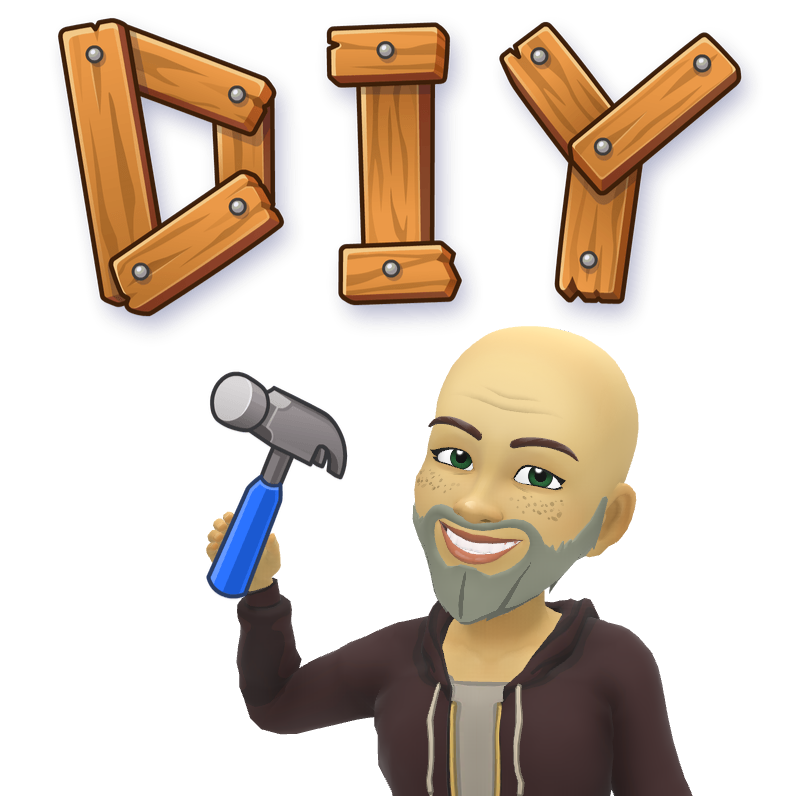
In the busy environment of a healthcare practice, efficiency and effective communication are paramount. Leveraging the right digital tools can not only save your team valuable time but also enhance patient experience and streamline your online presence. Here are some simple digital tools to consider for your local medical practice: Make Booking Easy: Online Appointment Scheduling Software: Implementing a user-friendly online appointment scheduling system can significantly improve patient convenience and reduce administrative burden. Patients can easily book appointments at their convenience, and your front desk staff can spend less time on the phone. Many systems can also send automated reminders, reducing no-shows. Communicate Securely and Efficiently: Secure Communication Platforms (If Applicable and Compliant): For certain types of practices where follow-up communication is necessary, exploring secure and HIPAA/GDPR-compliant communication platforms can streamline interactions with patients while ensuring data privacy. Manage Your Reputation Proactively: Online Review Platforms and Monitoring Tools: Online reviews are increasingly influential in healthcare decisions. Make it easy for satisfied local patients to leave reviews on platforms like Google, Yelp, or specialized healthcare review sites. Use monitoring tools to stay informed about your online reputation and respond professionally and promptly to both positive and negative feedback. Stay Connected and Share Information: Basic Email Marketing Platforms: Building an email list allows you to share important practice updates, health information relevant to your local community, and appointment reminders (with consent). Simple email marketing platforms make it easy to create professional-looking newsletters and stay in touch with your patient base. Want to simplify your online management and enhance your practice efficiency? Book a free 30-minute consultation call with us to discuss digital tools tailored to the specific needs of your local medical practice.

Hashtags act as vital links, connecting your practice with local individuals actively seeking healthcare information and services online. By strategically using a mix of general and, crucially, local hashtags, you can ensure your valuable content reaches the right people in your community when they need it most. Here's how to navigate the hashtag landscape for your local medical practice: Pinpoint Your Location: Local Service Tags are Essential: Be specific about your location. Use hashtags like #[YourTown]Dentist, #SouthportOptician, #[YourNeighbourhood]Physio. This helps people in your immediate vicinity find your services when they search online. Specify Your Services: Condition and Treatment Tags: Use hashtags that accurately describe the conditions you treat or the services you offer (e.g., #DentalImplants, #EyeExam, #SportsPhysio, #AcupunctureForPain). Combine these with your local tags for highly targeted reach. Engage Your Community: Local Health and Wellbeing Tags: Look for and participate in broader local hashtags related to health and wellbeing in your area (e.g., #[YourTown]Health, #LocalWellbeing, #Healthy[YourRegion]). This can connect you with individuals interested in health topics, even if they aren't immediately seeking your specific service. Learn from Others (Ethically): Observe the social media presence of other reputable healthcare providers in your local area (without directly copying their content). Note the hashtags they use that seem to be generating engagement within the local community. Balance Broad and Specific: Use a mix of broader health-related hashtags and very specific local ones to maximise your reach to both general health enthusiasts and those actively looking for your particular services nearby. Ready to effectively use local hashtags to connect with more patients in your community? CONTACT US HERE

In the healthcare sector, while professionalism and trust are key, engaging visual content can help you connect with your local community on a more human level and make important health information more accessible. Here's how to use visuals effectively for your local medical practice: Create a Welcoming First Impression: Practice Photos and Videos: Showcase a clean, modern, and welcoming environment within your practice. High-quality photos and short video tours can help potential patients feel more comfortable and familiar with your space before their first appointment. Highlight the patient waiting areas, consultation rooms (without showing sensitive information), and the overall atmosphere of care. Simplify Complex Information: Infographics and Visual Explanations: Healthcare information can sometimes be complex. Use simple, well-designed infographics to visually explain common health conditions, treatment processes, or preventative care tips. These are easily shareable and can make important information more digestible for your local audience. Introduce Your Expertise: "Meet the Practitioner" Short Videos: Short, professional videos introducing your practitioners and their areas of expertise can build confidence. These videos can be informal yet informative, allowing your team to share their passion for their work and their commitment to patient care in the local community. Show the Human Side (Non-Clinical and Ethical): While maintaining professionalism, consider sharing carefully chosen behind-the-scenes glimpses that highlight the human side of your practice. This could be photos of your team participating in local community health events or celebrating a team achievement (always ensuring patient privacy is maintained). Want to create compelling and trustworthy visuals for your local medical practice? CONTACT US FOR A CHAT HERE
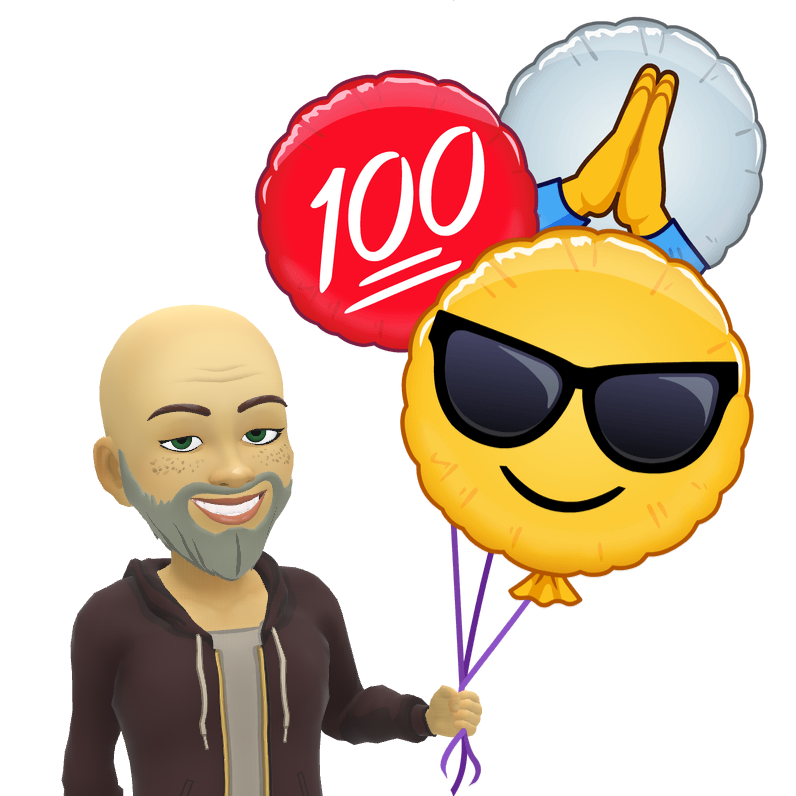
For medical locations like yours – whether you're a dental surgery in Birkdale, an optician in Southport, a physiotherapy clinic in London, or a complementary therapy centre across the region – building and maintaining the trust of your local community is absolutely paramount. In healthcare, people are making important decisions about their well-being, and your online presence plays a vital role in establishing confidence. Here are three key ways social media, when used thoughtfully, can strengthen that trust with potential and existing patients in your local area: Share Informative and Reliable Health Tips: Position Yourself as a Knowledgeable Local Resource: Instead of just promotional posts, make it a regular practice to share clear, concise, and evidence-based health information relevant to your specialisation and the common concerns of your local community. For a dental practice, this might be tips on maintaining oral hygiene or understanding different treatments. For an optician, it could be advice on choosing the right eyewear or recognising signs of eye conditions. By consistently providing valuable, easy-to-understand information, you position your practice as a knowledgeable and reliable resource, building trust before a patient even walks through your door. Remember to always adhere to ethical guidelines and avoid giving specific medical advice online. Introduce Your Caring and Qualified Team: Building Personal Connections within Your Community: Healthcare is a deeply personal matter, and patients want to feel comfortable and confident in the people who will be caring for them. Regularly introduce your team members through photos and short, friendly posts. Highlight their qualifications, their areas of expertise, and perhaps even a little about their connection to the local community. This humanises your practice, making it feel more approachable and less intimidating. When people see the friendly faces behind the services, it fosters a sense of familiarity and trust. Share Patient Experiences (Ethically and Anonymised/Consented): Positive feedback from other local patients can be incredibly powerful in building trust. With strict adherence to patient confidentiality and obtaining explicit consent, share anonymised testimonials or general positive feedback about the care and service your practice provides. Hearing about positive experiences from others in their local area can reassure potential patients that they will be in good hands. Focus on the positive outcomes and the caring nature of your team. Ready to build a stronger connection and greater trust with your local patients online? Contact us for a chat here
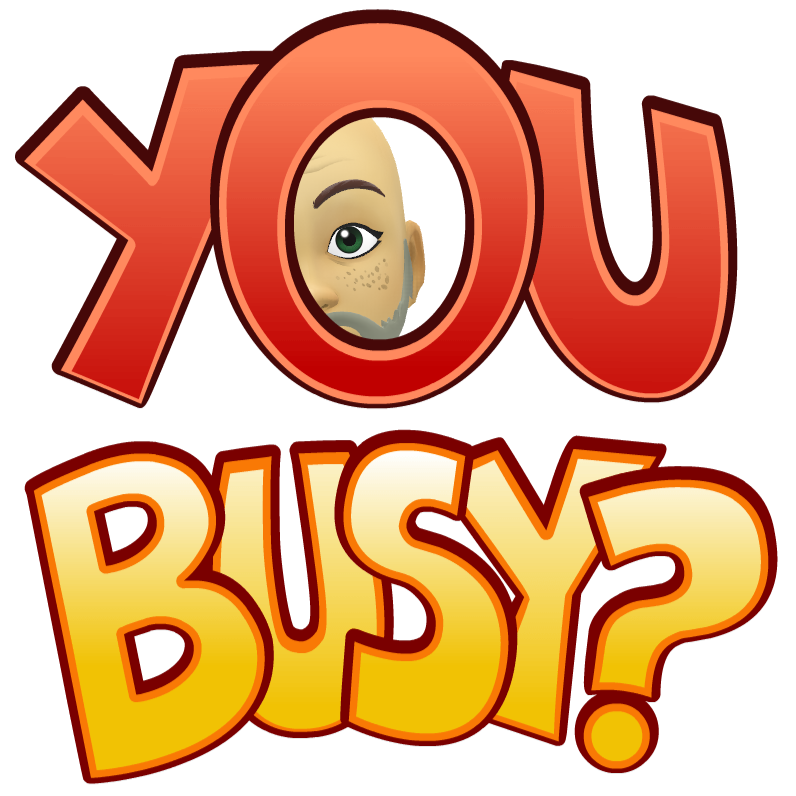
As a busy tradesperson, whether you're on a job in Birkdale or quoting for a project in Churchtown, time is money. Managing your online presence can feel like another task on an already packed schedule. Thankfully, there are simple and affordable digital tools designed to streamline your social media and online efforts, giving you back valuable time to focus on your craft and your local clients: Plan Ahead for Presence: Social Media Scheduling Apps: Instead of trying to post in the moment, use free or low-cost social media scheduling tools (like Buffer, Hootsuite, or even Facebook's own scheduling features) to plan and schedule your posts in advance. Dedicate a short time each week to schedule your content, ensuring a consistent online presence even when you're on a job. Quick Fixes for Quality: Simple Photo Editing Apps: You don't need to be a professional photographer to create great visuals. User-friendly mobile apps (like Snapseed or Canva) offer quick and easy tools to crop, brighten, and enhance your project photos directly from your phone before you post them. This ensures your work always looks its best online. Keep it Professional: Basic Invoicing and CRM Software: While not directly social media, efficient business management tools can free up time you can then dedicate to your online presence. Consider using simple invoicing or CRM (Customer Relationship Management) software to streamline your quotes, invoices, and client communication, making your business look more professional online and offline. Listen to Your Local Reputation: Online Review Platforms & Monitoring: Make it easy for your happy local clients to leave reviews on platforms like Google Business Profile and Facebook. Set up alerts or regularly check these platforms so you can respond promptly to both positive and negative feedback. Engaging with reviews shows you value your local customers and builds trust. Tired of feeling overwhelmed by your online presence? Book a free 30-minute consultation call with us. We can discuss your specific business needs and recommend the best time-saving digital tools to help you manage your marketing effectively and efficiently in your local area BOOK HERE

Think of hashtags as the digital signposts that help local people searching for your services find you amidst the vastness of social media. Using the right combination of broad and, crucially, local hashtags is essential for connecting with potential clients in your specific service area. Here's how to strategically use hashtags to reach your local audience: Get Specific: Local Service Tags are Key: Don't just use generic terms. If you're a plumber in Southport, use #SouthportPlumber, #PlumberSouthport, and even hyper-local tags like #PlumberAinsdale if you serve that specific area. The more specific you are, the more likely you are to reach people actively looking for your services nearby. Connect with Your Craft: Trade Specific Tags: Use relevant industry hashtags that describe your specific trade and the services you offer (e.g., #HomeImprovement, #LocalElectrician, #PaintingAndDecorating, #RoofingRepairs). Combine these with your local tags to target both the service needed and the geographic area. Become Part of the Community: Local Community Tags: Engage with broader local hashtags that connect you to the wider Southport community (e.g., #SouthportBusiness, #SupportSouthport, #[YourTown]Life). This can increase your visibility among local residents and businesses, even if they don't immediately need your services. See What Works Locally: Competitor Research (Smartly): Take a look at the social media profiles of other successful trades businesses in your local area. What hashtags are they using consistently? This can give you valuable insights into what's working for reaching the local audience. Don't just copy; identify patterns and relevant tags for your specific services. Quality Over Quantity: Be Strategic with Your Tagging: While it can be tempting to use as many hashtags as possible, focus on relevance. A mix of 5-10 well-chosen, targeted hashtags is far more effective than a long list of generic terms. Ready to unlock the power of local hashtags and connect with more clients in your area? Contact us here for a chat

For trades businesses like yours – whether you're a painter in Chiswick, an electrician in Hammersmith, or a plumber across Ealing – being visible to local homeowners and businesses is absolutely crucial. Unlike some online businesses, your service area is geographically defined, making local social media engagement incredibly powerful. Here are a few simple yet effective habits to adopt that can make you the first name people think of when they need your expertise: Showcase Your Expertise Where It Matters: Locally Focused Visuals: Instead of just sharing generic photos of your work, make it a habit to highlight projects you've completed in your specific service areas. When you finish a fantastic bathroom refit in Birkdale, share high-quality photos and mention "Another happy homeowner in Birkdale enjoying their new bathroom!" Tag the location of the job on platforms like Instagram and Facebook. This not only showcases your skills but also demonstrates that you've worked in the area, building trust with potential neighbours. Think about creating short video tours of completed projects, perhaps with a quick testimonial from the local client. Engage Locally: Become a Helpful Community Member: Social media isn't just a billboard; it's a digital extension of your local community. Make it a daily or weekly habit to seek out and participate in relevant local online conversations. Join Southport-based Facebook groups focused on home improvement, local recommendations, or even general community discussions. When someone asks for a reliable electrician in Churchtown, offer helpful, non-promotional advice or share a link to a relevant blog post on your website. This positions you as a knowledgeable expert who cares about the community, making people more likely to remember you when they need your services. Share the Love: Local Testimonials and Reviews are Gold: Your best marketing comes from satisfied customers, especially those in your local area. Make it a routine to ask happy clients if they'd be willing to provide a short written or video testimonial about their experience. When you get a glowing review on your Google Business Profile from a customer in Ainsdale, share a screenshot or quote on your Facebook and Instagram, saying something like, "Another fantastic review from a delighted customer in Ainsdale! We pride ourselves on our service." This local social proof is incredibly powerful for convincing others in the vicinity that you're a trustworthy and reliable choice. Bonus Tip: Be the Speedy Responder to Local Enquiries: In the trades, timing can be everything. Make it a priority to check your social media messages and comments multiple times a day. A prompt, professional, and helpful response to a local homeowner's urgent plumbing issue or a landlord's request for a quote can be the deciding factor in winning that job. Show your local community that you're responsive and value their business. Ready to create visually stunning content that wins you more local jobs? Contact us here

For trades businesses, being visible to local homeowners and businesses is crucial. Social media can help you become the first name people think of when they need your services. Here are a few simple habits to adopt: Showcase Your Expertise Locally: Regularly share photos and short videos of your completed work in your local area. Mention the specific neighbourhood or even the type of property (e.g., "Another successful bathroom renovation in a Victorian terrace near the Promenade!"). Tag your location in your posts to reach local searches and make it clear where you operate. Engage Locally & Be Helpful: Don't just broadcast your services; participate in local online conversations. Join relevant Facebook groups for your town or surrounding areas (e.g., home improvement groups, local community pages). When you see someone asking for recommendations or advice related to your trade, offer helpful, non-promotional insights. This builds trust and positions you as a knowledgeable local expert. Share Local Testimonials & Reviews: Happy customers are your best marketing tool. Make it a habit to ask satisfied local clients if they'd be willing to provide a short testimonial you can share on your social media. Even better, encourage them to leave reviews on your Google Business Profile or Facebook page and then share those positive reviews on your other social platforms. Highlighting local feedback builds credibility within your community. Bonus Tip: Respond Promptly to Local Enquiries: Make it a priority to check your social media messages and comments regularly. A quick and professional response to a local enquiry can be the difference between landing a new job and losing out to a competitor. Show that you value local business. Ready to get more local leads? Contact us here for a chat
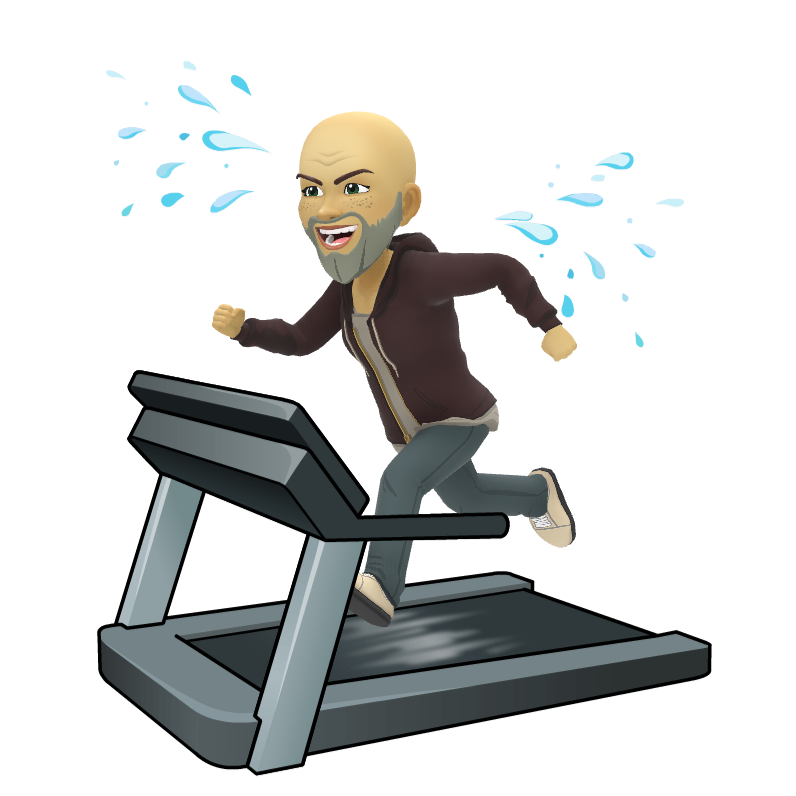
As a health and wellness practitioner, your time is precious. Juggling client appointments, admin, and marketing can be a challenge. Thankfully, there are simple digital tools that can help you streamline your social media and online presence, freeing up more time to focus on your clients in your local area: Scheduling Savvy: Explore free or low-cost social media scheduling tools that allow you to plan and schedule your posts in advance. This means you can batch your social media work and maintain a consistent online presence without having to post manually every day. Easy Image & Video Editing: User-friendly mobile apps can help you quickly edit photos and create short videos for your social media. These often have templates and features that make creating professional-looking content a breeze, even if you're not a design expert. Basic Email Marketing: Start building an email list (even a small one!) to stay in touch with potential and existing clients in your local area. Free email marketing platforms can help you send out newsletters with special offers, workshop announcements, or valuable health and wellness tips. Online Booking Systems: Make it easy for potential local clients to book appointments online through your website or social media. Many affordable or free booking systems integrate seamlessly with your online presence, saving you time on phone calls and manual scheduling. Overwhelmed by the tech options? Book a free 30-minute consultation call with us. We can discuss your specific needs and recommend the best time-saving tools for your local wellness practice. Contact us here
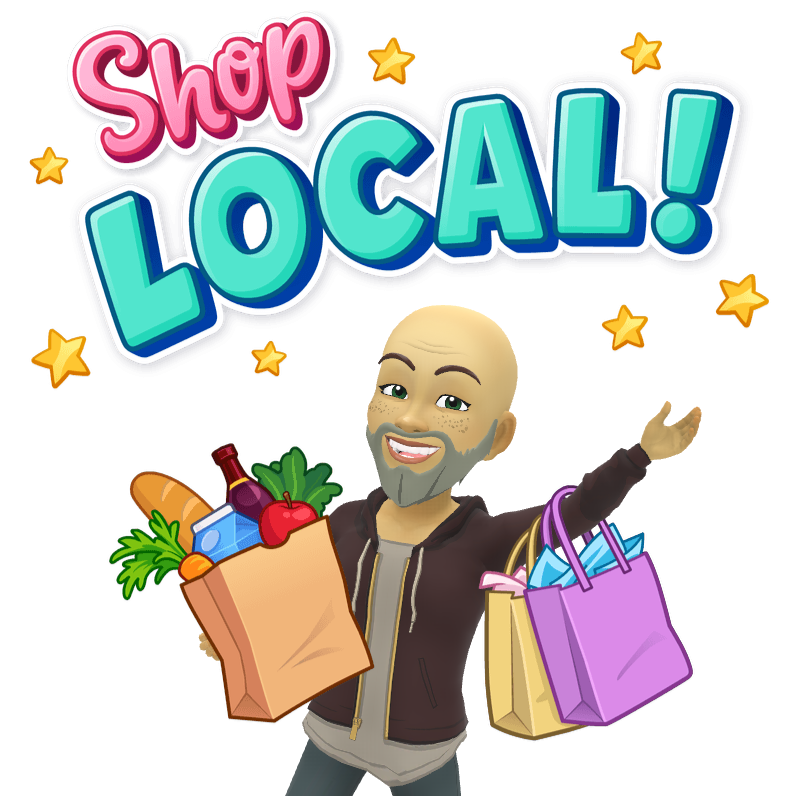
Hashtags are essential for getting your social media content seen by the right people. For health and wellness practitioners and studios in your local area, using a mix of broad and local hashtags is crucial for connecting with your target audience. Here's how to find your hashtag hotspots: Local is Key: Research and use specific hashtags for your local area (e.g., #[YourTown]Yoga, #[YourTown]Pilates, #[YourTown]Massage, #[YourTown]Nutrition). Also, consider neighbouring areas if your reach extends slightly. Industry Specific: Use relevant health and wellness hashtags that describe your services (e.g., #YogaInstructor, #PersonalTrainer, #NutritionCoach, #MassageTherapy, #Mindfulness). Combine these with your local tags for targeted reach. Community Focused: Look for and engage with hashtags used by local community groups, events, and initiatives related to health and well-being in your area (e.g., #[YourTown]Wellbeing, #[YourTown]Active). Competitor Research (Locally): See what hashtags other successful health and wellness businesses in your local area are using. This can give you valuable insights into what's working nearby. Don't Overdo It: Aim for a mix of around 5-10 relevant hashtags per post. Quality over quantity is key. Want to know the top 20 most effective hashtags for health and wellness businesses in your local area right now? Contact us for more information
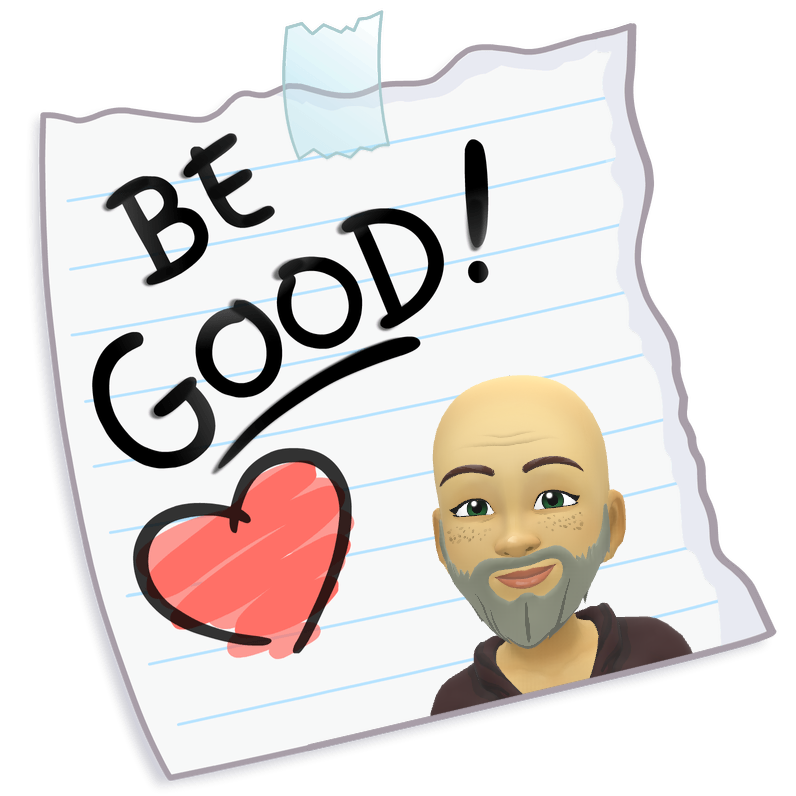
In the health and wellness world, visuals speak volumes. To capture attention on busy social media feeds, especially on platforms like Instagram and Facebook, compelling imagery and videos are key. Here are some visual content ideas tailored for health and wellness practitioners and studios in your local area: Behind-the-Scenes at Your Local Studio: Give potential clients a glimpse into your welcoming space. Share short videos or photos of your studio setup, equipment, or even preparations for a class or session. This helps build familiarity and trust with your local audience. Quick & Effective Exercise/Mindfulness Tips (Local Edition): Create short video demonstrations of simple exercises that can be done at home or in local spots (e.g., stretches you can do after a walk in the local park). Share quick mindfulness techniques that locals can incorporate into their daily routines. "Meet the Practitioner" Series: Introduce yourself and your team! Share short videos or carousels highlighting your expertise, your passion for wellness, and your connection to the local community. This personal touch can build a stronger rapport with potential local clients. Showcasing Local Partnerships: If you collaborate with other businesses in your local area (e.g., health food shops, cafes), create joint visual content. This expands your reach to their audience and reinforces your local presence. Feeling inspired to create more engaging visuals? Contact us if you need any help putting any of this into practice
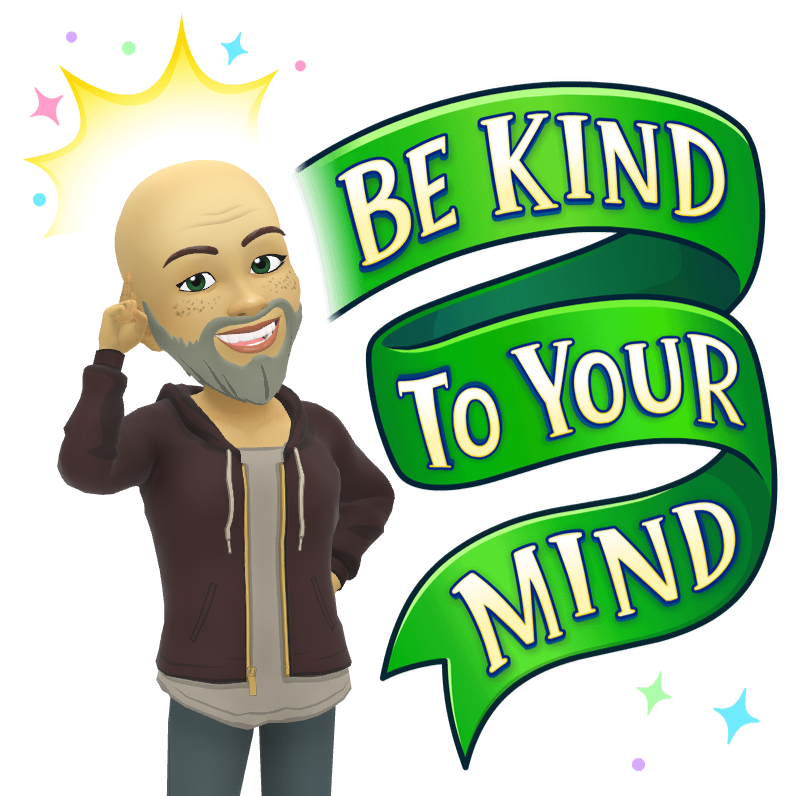
Building a thriving health and wellness practice in Southport relies on connecting with the local community. Social media offers a powerful way to do just that! But it doesn't need to be overwhelming. Here are three simple, consistent habits you can adopt today to start attracting more local clients: Showcase Your Local Expertise: Don't just talk about general wellness; highlight your connection to ypour local area. Share photos or videos of your studio/practice, mention local parks or landmarks in your content (e.g., "Enjoy a mindful walk along Southport Pier after your session"), and tag your location in every post. This helps you get discovered by locals searching for services in your area. Engage with Your Community: Social media is a two-way street. Take a few minutes each day to search for local conversations using relevant regional hashtags (e.g., #SouthportYoga, #SouthportFitness). Like and comment on posts from potential clients, local businesses, and community groups. This builds visibility and positions you as an active and engaged member of the local wellness scene. 3 . Share Client Success Stories (Locally Focused): With their permission, share testimonials or before-and-after photos from your local clients. Mentioning their local connection ("Sarah from Chiswick loved...") can be incredibly powerful social proof for others in the area. This builds trust and shows tangible results for people in your community. Incorporating these three simple social media habits into your daily or weekly routine can make a significant difference in connecting with potential clients right here in Southport. By showcasing your local expertise, engaging with your community, and sharing local success stories, you'll build a stronger online presence that resonates with the people you want to reach.

Estate and letting agencies handle a vast amount of information and repetitive tasks. Artificial intelligence offers exciting opportunities to streamline these processes, freeing up your agents to focus on what they do best: building relationships and closing deals. While the human touch remains crucial in property, AI can be your powerful behind-the-scenes assistant. Think about using AI-powered tools to help you draft property descriptions quickly and efficiently, ensuring they are engaging and informative. Consider AI that can analyse large datasets to identify market trends in your local area, helping you to provide more accurate valuations and advice to your clients. Furthermore, explore AI tools that can assist with scheduling viewings, managing enquiries, and even providing initial responses to potential leads, ensuring no opportunity is missed. By embracing AI, you can increase your agency's efficiency, reduce administrative burdens, and ultimately provide a faster and more streamlined service to your clients, setting you apart from the competition.

In the visually-driven world of social media, Instagram and TikTok offer a fantastic platform for estate and letting agents to truly showcase properties and their unique expertise. Forget static photos alone – think engaging video walk-throughs that bring potential buyers and tenants right into the heart of a property. Short, dynamic TikToks can highlight key features, local amenities, or even offer quick property market updates in an easily digestible format. Consider creating visually stunning content that goes beyond the standard listing. Imagine short video tours narrated by your agents, highlighting the best aspects of a property and the local area. Use Instagram Stories to share behind-the-scenes glimpses of your team, offer virtual open houses, and run interactive Q&A sessions about the buying or renting process. By leveraging the power of visuals and short-form video, you can capture the attention of a wider audience, particularly younger demographics, and create a more emotional connection with potential clients, ultimately driving more enquiries and viewings.
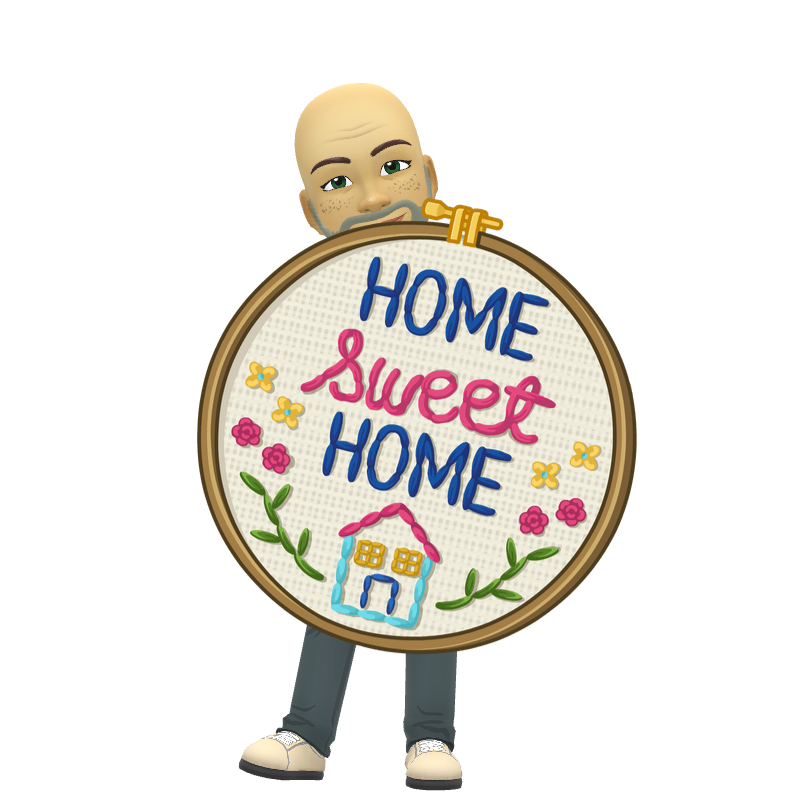
In the fast-paced world of property, staying top-of-mind with local residents is crucial. While Rightmove and Zoopla have their place, Twitter offers a unique opportunity for estate and letting agents to become the go-to voice for all things property in your specific area. It's not just about listing new homes; it's about engaging with the local community, sharing valuable insights, and building relationships. Think about using relevant local hashtags like #SouthportProperty, #LiverpoolHomes, or #[YourTown]Rentals to connect with people actively looking to buy or let in your vicinity. Share snippets of local news that might affect the property market, offer quick property tips, and engage in conversations with local businesses and community groups. By consistently providing valuable, locally-focused content, you can position your agency as the expert in the area, attracting potential buyers, sellers, landlords, and tenants who might not be actively searching on the big portals yet. Twitter is your chance to be part of the local conversation and build a loyal following who think of you first when their property needs arise.

AI is not just a collection of individual tools; it's a transformative force that can be integrated across your entire marketing workflow. From understanding customer behaviour and personalising marketing messages to automating repetitive tasks and analysing campaign performance, AI offers a holistic approach to enhancing your marketing efforts. Explore the various ways AI can work together to create a more efficient, effective, and data-driven marketing strategy, ultimately freeing you up to focus on building relationships and growing your business. Consider how AI can streamline your customer communication . By analysing data on how your audience interacts with your content, AI tools can help you tailor your messaging for maximum impact, ensuring you're delivering the right information to the right people at the right time. Furthermore, think about the time you can save by automating repetitive tasks such as scheduling social media posts or segmenting your email list. This frees up your valuable time to focus on the bigger picture – building relationships with your customers and developing innovative strategies for business growth. Embracing AI across your workflow isn't just about keeping up with the times; it's about gaining a genuine competitive advantage and working smarter, not just harder.

Valuable insights often get lost in the flurry of meetings and conversations. AI-powered meeting assistants can now transcribe and summarise discussions, making it easier to capture key information, identify action points, and analyse important points. This technology can be particularly useful for reviewing client calls, brainstorming sessions, and team meetings, ensuring that no valuable information slips through the cracks. Learn how to leverage AI to improve meeting productivity, extract key insights, and make data-driven decisions for your marketing strategies. Think about how this could transform your client interactions . By using AI to transcribe and summarise calls, you can easily revisit key points, ensuring you fully understand your clients' needs and preferences. This allows for more personalised and effective follow-up, strengthening client relationships. Furthermore, consider the benefits for internal team meetings and brainstorming sessions . AI can help you keep track of all the ideas and decisions made, ensuring everyone is on the same page and that valuable insights aren't forgotten. This leads to more efficient teamwork and better-informed strategic planning for your marketing efforts.

In the visually-driven world of online marketing, compelling graphics are essential for capturing attention and reinforcing your brand. While professional design skills are valuable, AI-powered design tools are making it easier than ever for business owners to create stunning visuals for social media, website banners, marketing materials, and more. Discover how AI can help you with layout suggestions, colour palettes, image enhancements, and even generating unique design elements, empowering you to create a visually appealing and consistent brand presence. Consider the impact of eye-catching social media graphics that you can create quickly and easily with AI assistance. Whether it's promotional posts, event announcements, or engaging visual content to break up text, AI can help you produce professional-looking designs without needing extensive design knowledge or hiring a graphic designer for every small task. Furthermore, think about creating attractive website banners and marketing materials that align perfectly with your brand's aesthetic. AI tools can help you maintain visual consistency across all your online and offline presence, strengthening your brand recognition and making a positive impression on your audience.

Staring at a blank screen, struggling to find the right words? AI writing assistants are becoming invaluable tools for marketers, helping to overcome writer's block and streamline the content creation process. From brainstorming ideas and drafting social media posts to crafting compelling website copy and even outlining blog articles, AI can be your always-available writing partner. Learn how to effectively prompt and guide these AI tools to generate high-quality content that resonates with your target audience and saves you valuable time and effort. Think about how this can revolutionise your social media presence . Instead of spending ages crafting the perfect tweet or Facebook post, you can use AI to generate several options quickly, allowing you to choose the one that best fits your tone and message. Furthermore, consider the time saved when creating website content or blog posts . AI can help you get the initial draft down, freeing you up to focus on refining and adding your expert touch. This allows for a more consistent and efficient content output across all your online platforms, helping you to connect with your audience more effectively.

Video continues to dominate the online landscape, but the thought of being on camera can be daunting for many business owners. Now, AI-powered platforms offer a revolutionary solution: the ability to create realistic and engaging videos using AI avatars. You can bring your messages to life, deliver presentations, explain your services, and connect with your audience visually, all without ever stepping in front of a camera. Discover how to craft compelling video scripts and use AI avatars to build your brand presence and engage your audience in a dynamic new way. Consider the possibilities for creating engaging social media videos that capture attention as users are scrolling through their feeds. AI avatars can deliver your key messages, showcase your expertise, or even present customer testimonials in a visually appealing format. Furthermore, think about developing comprehensive online training modules or informative website explainers using your digital persona. This allows you to deliver consistent and professional video content without the need for repeated filming. Learn how to harness these AI tools to create impactful video content that resonates with your audience and elevates your brand's online presence.

Imagine being able to share your expertise and connect with your audience through the engaging medium of audio, without the time constraints and potential discomfort of recording yourself. Artificial intelligence now offers incredible tools that can transform text into natural-sounding voiceovers. This opens up exciting possibilities for creating audio content for podcasts, social media audio clips, website audio guides, and even personalised voice messages. Think about the potential for launching your own podcast , sharing valuable insights and building a loyal following through consistent audio episodes. AI voice technology can streamline the production process, allowing you to focus on creating compelling content without getting bogged down in recording and editing complexities. Similarly, consider the power of creating training resources using AI voice. You can easily develop audio lessons, walkthroughs, and explanations to supplement your coaching programmes or offer standalone learning materials, providing your clients with flexible and accessible ways to consume information. Learn how to leverage AI voice technology to expand your reach, cater to different learning styles, and add a unique and valuable dimension to your brand communication and educational offerings.

Hi everyone, and welcome to the Facebook module! Facebook is still a powerhouse for connecting with people in your local area. In this lesson, we're going to walk you through setting up your Facebook Business Page properly – this is different from your personal profile and it's essential for your business." "Think of your Facebook Business Page as your shop window online. It's where potential customers can find out about you, see what you offer, and get in touch." "First things first, you'll need a personal Facebook account to create a Business Page, but don't worry, your personal information won't be publicly linked to your business page unless you choose to." "To create a page, go to facebook.com/pages/create. You'll be asked for a 'Page Name' – this should be the name of your business. Then you'll need to choose a 'Category' – pick the one that best describes what you do (e.g., 'Local Business', 'Restaurant', 'Hair Salon')." "You'll also be prompted to add a 'Profile Picture' and a 'Cover Photo'. Your profile picture is usually your logo. Your cover photo is the big image at the top – this could be a photo of your shop, your team, or a happy customer. Make sure these look professional and are the right size (Facebook will give you recommendations)." "Finally, fill in all the other details like your website address, phone number, opening hours, and address. The more information you provide, the easier it is for people to find and contact you." "Remember, keep your language friendly and approachable – like you're talking to someone face-to-face." Homework Task: "Your homework for this lesson is to either create your Facebook Business Page if you haven't already, or to go through your existing page and make sure all the information is complete and up-to-date. Pay particular attention to your 'About' section, profile picture, and cover photo." Great job! Getting your Facebook Business Page set up correctly is the first crucial step. In the next lesson, we'll look at how to create your first engaging posts. See you there!

Ah, finances. The very word can evoke a range of emotions, from mild confusion to outright panic, especially for those of us whose brains tend to operate on a more… creative wavelength. For me, the world of balance sheets, VAT returns, and forecasting often feels like trying to decipher an ancient alien language. And let's not even get started on the shiny things. The magnetic pull of a new gadget, a "must-have" tool, is often irresistible. Logic and existing possessions be damned! The justification for why this new acquisition is absolutely essential is usually swift and convincing, even if I already own something remarkably similar – or, in some truly spectacular cases, the exact same thing that has simply vanished from my awareness. Take the saga of the man bag. A couple of years ago, the thought of a new laptop bag took up significant real estate in my brain. Sleep was a distant memory as I eagerly awaited its arrival from the Amazonian depths, completely disregarding the small mountain range of perfectly functional bags already residing in my wardrobe. The grand unveiling was… anticlimactic. It was a good-looking bag, no doubt, but a crucial two inches too small for my laptop. Now, a rational person might have simply returned it and ordered the correct size. Not me. In a feat of mental gymnastics, I convinced myself that what I really needed was a smaller laptop – lighter on the back, you see! A swift trip to Currys ensued, and a new, smaller laptop was acquired to fit the undersized bag. Fast forward two years to this very week. Browsing a gadget shop with my daughter, a beautiful laptop catches my eye. The familiar "I must have it" siren song begins to play in my head. My daughter, bless her observant soul, gently reminds me, "Dad, aren't you sure you have one of those at home?" And there it was. The very same small laptop I'd bought to fit the ill-fated man bag, used for a week, and then completely forgotten about until this very moment! The financial logic? Non-existent. The allure of the shiny new thing? Utterly compelling. Then there's the treacherous landscape of subscriptions. As I’ve confessed before, my enthusiasm for new software solutions often outweighs my follow-through. The siren call of a free thirty-day trial is almost impossible to resist. "I can always cancel," I tell myself, knowing full well that the likelihood of "future Phil" remembering to do so is slim to none. The result? Monthly direct debits silently draining my bank account for software I’ve long forgotten I even signed up for, let alone used. The fear of actually checking my bank statements only compounds the problem, allowing these phantom subscriptions to continue their stealthy financial drain. Running two limited companies, both VAT registered, only amplified my financial anxieties. The deadlines, the paperwork, the constant need for meticulous record-keeping – it was a recipe for overwhelm. After years of last-minute tax returns and a general feeling of being perpetually behind the financial curve, I finally realised I needed help. Now, you might reasonably ask, "Why not just hire a bookkeeper, Phil?" And that was a logical consideration. However, after years of feeling like I was constantly scrambling to scale the business while simultaneously battling financial admin, I recognised the need for someone more… well, "grown-up" than me to take the reins. Someone whose primary focus would be keeping the finances in order. Bringing Rob on board as a business partner was one of the best decisions I've ever made. Having known him for years, trust wasn't an issue. Suddenly, tax returns were filed on time, bills were paid promptly, invoices went out like clockwork (and were actually chased if they weren't paid – a task my inner people-pleaser found excruciating!). Crucially, any new software subscriptions now had to pass the "Rob Test." His sensible approach, allowing a few days of consideration before committing, usually gave my impulsive brain enough time to move on to the next shiny object, saving us a considerable amount of money in the process. So, if you're an entrepreneur, especially one who recognises some of these financial foibles, take the sensible route. Either outsource the financial aspects that consistently wreck your head, or, if you can, find your own "Rob" – someone grounded and financially savvy to keep you on the straight and narrow. Trust me, the peace of mind (and the savings!) will be more valuable than any fleeting gadget.

So, seventeen years immersed in the ever-evolving world of marketing. And the grand total of formal training or qualifications I possess? Zilch. Nada. Not a sausage. It's all been a glorious, self-taught adventure, fueled by curiosity, a healthy dose of trial and error, and, I’m increasingly convinced, the wonderfully wired workings of my ADHD brain. My first proper plunge into the choppy waters of self-employment came with GOSH, my foray into the world of women’s and children’s footwear. This was a pre-internet, pre-social media landscape. We’re talking proper old-school marketing: newspaper ads, painstakingly designed (and probably slightly wonky) flyers, and the sheer graft of getting the word out on the physical streets. Looking back, I realise this forced me to tap into something that now feels intrinsically linked to my ADHD: the ability to think completely outside the box. It wasn’t a conscious strategy; it was more a case of my brain naturally veering off the well-trodden path and stumbling upon unexpected solutions. Turns out, that’s one heck of a superpower. One of my early “ahead of the curve” moments, as I see it now, was my slightly obsessive approach to customer data. Every single person who made a purchase was politely (and probably rather enthusiastically) asked for their name, address, and phone number in exchange for the chance to win a voucher. The response rate was phenomenal – I reckon over 90% happily obliged. This treasure trove of information then allowed me to send out quarterly postcards, handwritten addresses and all, adorned with stamps and offering enticing discounts. Hours were spent hunched over the kitchen table, licking stamps and feeling like a Victorian postal worker. But you know what? It bloody well worked. People felt valued, remembered, and they kept coming back. Then there were the more… direct marketing strategies. I vividly recall one occasion when I decided the best way to drum up business was to literally stand in the middle of town handing out leaflets. My focus, as is often the case with ADHD, was singular and intense. I was in the zone, a human flyer-dispensing machine! So much so that one of my poor staff members had to physically run to find me, breathlessly informing me that the shop was now overflowing with eager shoppers, all thanks to my impromptu street performance. And who could forget the time I donned a full Santa Claus costume on a sweltering summer’s day, brandishing a hand-painted sign proclaiming a “One Day Sale”? The sheer absurdity of it stopped people in their tracks, and yes, it brought customers flooding in. My brain just seems to latch onto the unexpected, the slightly bizarre, the things that cut through the noise. Another “genius” (in my own slightly biased opinion) marketing tactic involved getting a hundred laminated signs made and strategically placing them on lampposts and railings all over town. They were bright, bold, and undeniably eye-catching. And they worked wonders… until the council slapped me with a hefty £500 fine for illegal advertising! Thankfully, the increased business more than covered the cost, a testament to the effectiveness of thinking… well, differently. Looking back, these weren’t calculated marketing strategies born from textbooks or business school seminars. They were the impulsive, energetic, and sometimes slightly chaotic actions of an entrepreneur whose brain just operates on a different frequency. What might seem like a lack of focus to some is, in reality, a constant stream of ideas, a relentless pursuit of what might work, and a fearless willingness to try the unconventional. This inherent “think different” capability, I’m increasingly convinced, is a significant advantage of having ADHD in the business world. Over the past seventeen years, as I’ve transitioned into helping other business owners navigate the digital landscape, I’ve found that my brain’s unique wiring allows me to see opportunities and solutions that others might miss. Give me a brief overview of any business, and within a remarkably short space of time, my mind will be buzzing with a multitude of ways to get their message in front of potential customers without needing a bottomless pit of cash. It’s not always smooth sailing, of course. The very traits that fuel this creative thinking can also present challenges – the distractibility, the impulsivity, the occasional struggle with organisation. But understanding these aspects of the ADHD mind, both the strengths and the challenges, is crucial for anyone navigating the entrepreneurial world with a neurodivergent brain. It’s about harnessing the superpowers while putting systems in place to manage the kryptonite. And trust me, there’s a whole lot of superpower to unpack.
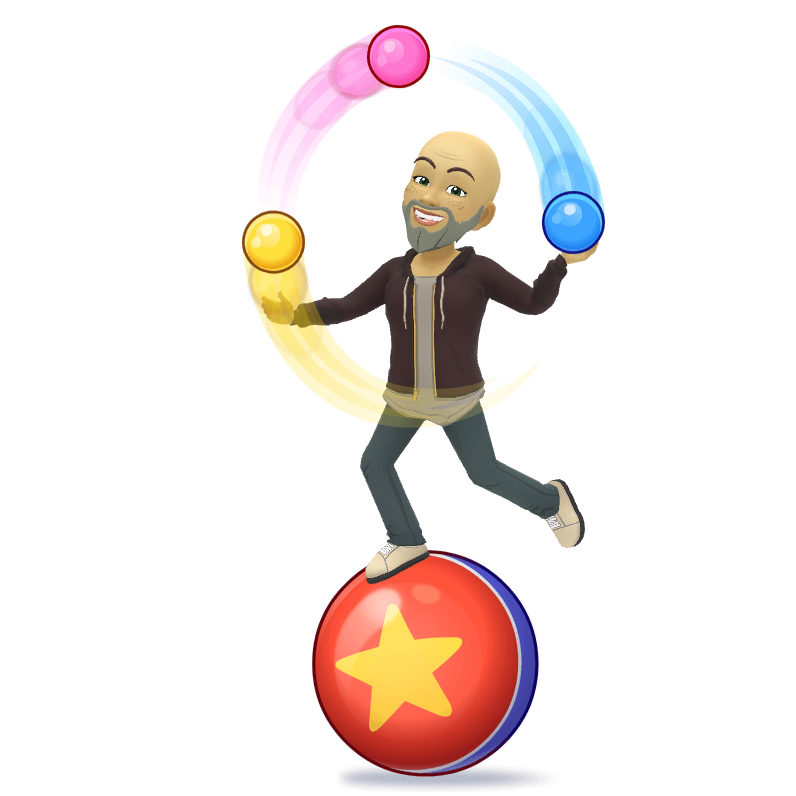
Right, let's talk about the nitty-gritty. Now, I'm no guru on this ADHD lark – I'm still very much on my own learning curve, piecing together the jigsaw puzzle of my life through this new lens. But after over half a century of unknowingly navigating this neurodivergent landscape, I reckon I've picked up a few things. And if sharing some of my own peculiar traits helps even one other person out there who's been feeling similarly… well, then this chapter’s done its job. First up, the sheer volume of stuff happening in my brain at any given moment. It's like trying to attend seventeen different events simultaneously, all within the confines of my skull. I often liken it to a full-blown circus. Picture this: trapeze artists swinging wildly between thoughts, a parade of elephants marching through half-formed ideas, clowns juggling to-do lists that keep multiplying, and a ringmaster (that’s supposed to be me) desperately trying to get everyone to focus on the main act – whatever that main act is supposed to be at that particular moment! It’s exhilarating and utterly exhausting all at once. And then there are the glorious, meandering adventures of my attention span. Take the simple task of unloading the washing machine. In a neurotypical world, this is a straightforward A-to-B mission. In Phil’s world, it’s an epic quest with multiple enticing side quests. On my way to the laundry room, I might suddenly decide that what the kitchen really needs is a culinary masterpiece. So, I’ll start gathering ingredients, only to notice a rogue sock on the floor, which then triggers a mini-tidying spree. Of course, the tidying is never completed. A glimpse out the window reveals the overgrown state of the lawn, and suddenly I’m convinced that urgent horticultural intervention is required. Before I know it, I’m in my car, halfway to the drive-through coffee shop, completely forgetting the damp laundry languishing in the machine, the half-chopped onions on the counter, and the jungle that was once my lawn. The grand finale? Returning home to utter chaos, feeling inexplicably drained, and battling the overwhelming sense that I’ve achieved absolutely nothing. The irony, of course, is that I’ve probably initiated half a dozen tasks, just not finished any of them. Which neatly brings me to the ever-present companion of the ADHD entrepreneur: guilt. A heavy, often unwarranted, weight that seems to settle in my chest. Guilt for not achieving enough (even when I’ve been buzzing around like a caffeinated bee all day). Guilt for not spending enough quality time with family and friends, a feeling often exacerbated by the next delightful ADHD trait… Making plans. Oh, the tangled web of good intentions and subsequent guilt. As a natural people-pleaser, my initial response to any invitation is an enthusiastic “Yes!” My brain, in that moment of social connection, genuinely wants to be there. But then, almost immediately, the internal debate begins. Will I really feel like it then? What other urgent (and often self-imposed) tasks will crop up? The result? A frantic mental scramble to come up with a plausible excuse, followed by a fresh wave of guilt for letting people down and further reinforcing the feeling of being a flaky friend. It’s a truly draining cycle. Ah, the siren call of shiny new things! The fixation on buying. It can strike at any moment, triggered by the most innocuous thought. Suddenly, I need that widget, that gadget, that brightly coloured… something. My brain launches into a full-scale justification campaign, meticulously outlining all the logical (and often wildly illogical) reasons why this purchase is absolutely essential for my survival/business success/general well-being. I’ll then embark on a mission to acquire said item, often getting lost in a rabbit hole of online reviews and comparisons. This can lead to one of two outcomes: either I become so overwhelmed by the sheer volume of choice that I abandon the purchase altogether, experiencing a bizarre sense of relief at having “saved” all that money. Or, I’ll finally make the purchase, experience a fleeting moment of intense excitement during the unboxing, only for the novelty to wear off almost instantly. The prized possession will then be relegated to a dusty corner, only to be rediscovered a year later, sparking the exact same cycle of intense interest followed by rapid disinterest. It’s like Groundhog Day, but with impulse buys. And then there’s the eternal struggle with decluttering. The noble intention to create a serene and organised environment often starts with a burst of hyperfocus. I’ll enthusiastically gather items to be thrown away or donated, creating impressive piles of potential freedom. But then, the “what if?” gremlins start whispering in my ear. “What if you need that chipped mug for a future craft project?” “That slightly stained t-shirt might be perfect for painting!” One by one, items are rescued from the discard pile, deemed too valuable (in some abstract, future scenario) to part with. The end result? The decluttering mission ends with everything being put back exactly where it was, possibly even more jumbled than before. Finally, the pendulum swing of tidiness. There seems to be no middle ground in my world. It’s either a state of hyper-focused, almost obsessive tidying, where every surface gleams and every item is in its designated place (a state that rarely lasts long), or a descent into glorious, chaotic disarray. The washing up can pile up for days, creating a precarious tower of dirty dishes, while other areas of the house might resemble a meticulously organised stationery shop. It’s a constant battle between these two extremes. These are just a few glimpses into the wonderfully weird and often challenging world of my ADHD brain. It’s not a deficit; it’s a different way of processing the world, with its own unique set of quirks, strengths, and, yes, occasional frustrations. But understanding these traits is the first step towards navigating them more effectively, especially in the demanding world of small business. And trust me, there’s plenty more to unpack as we go along.







